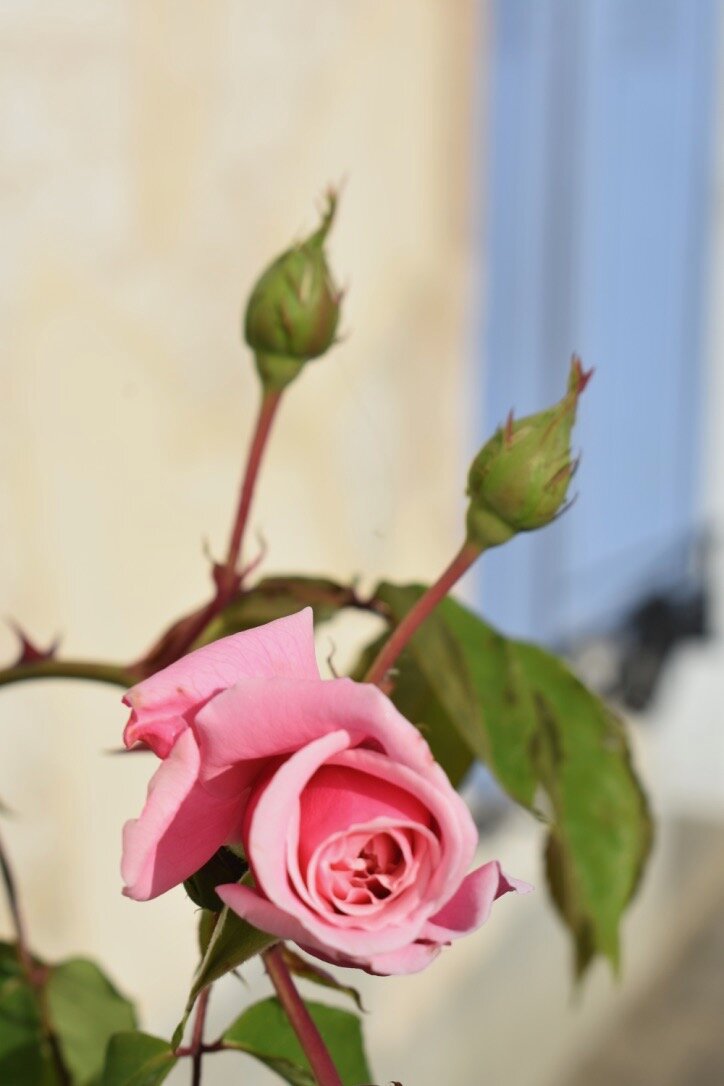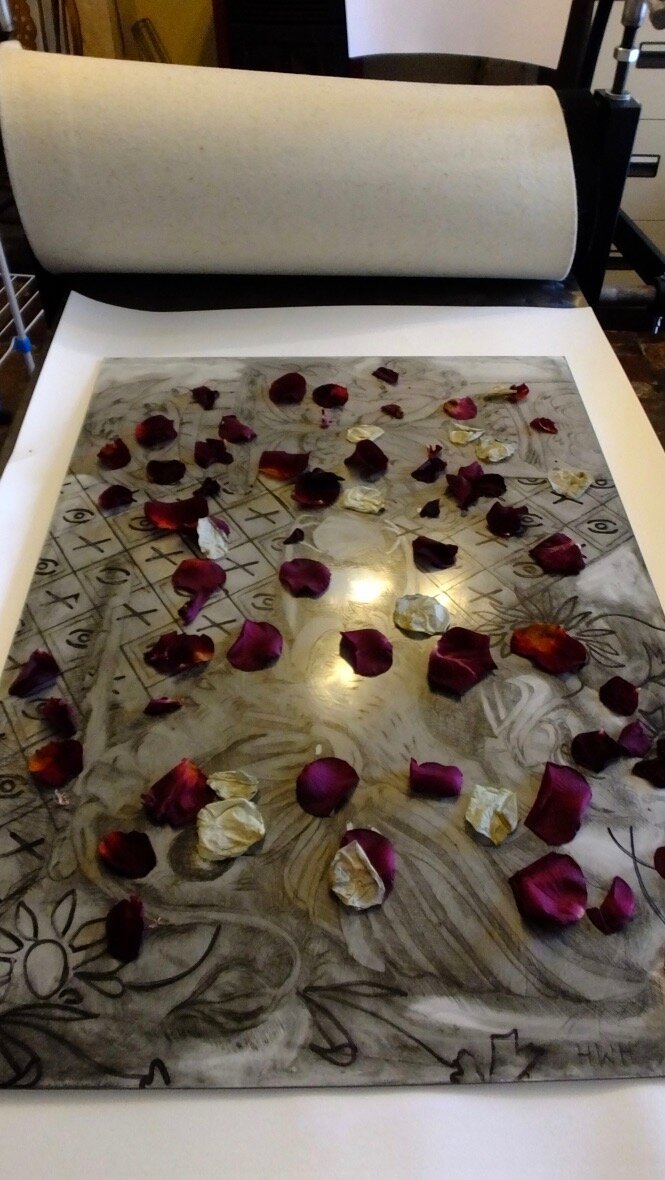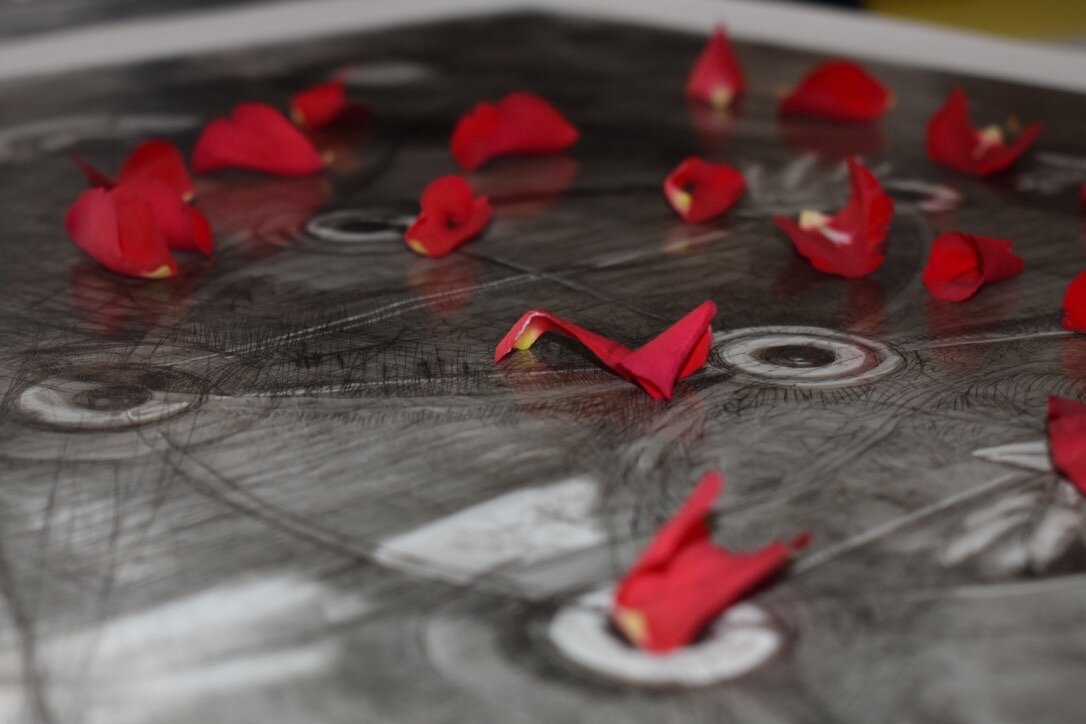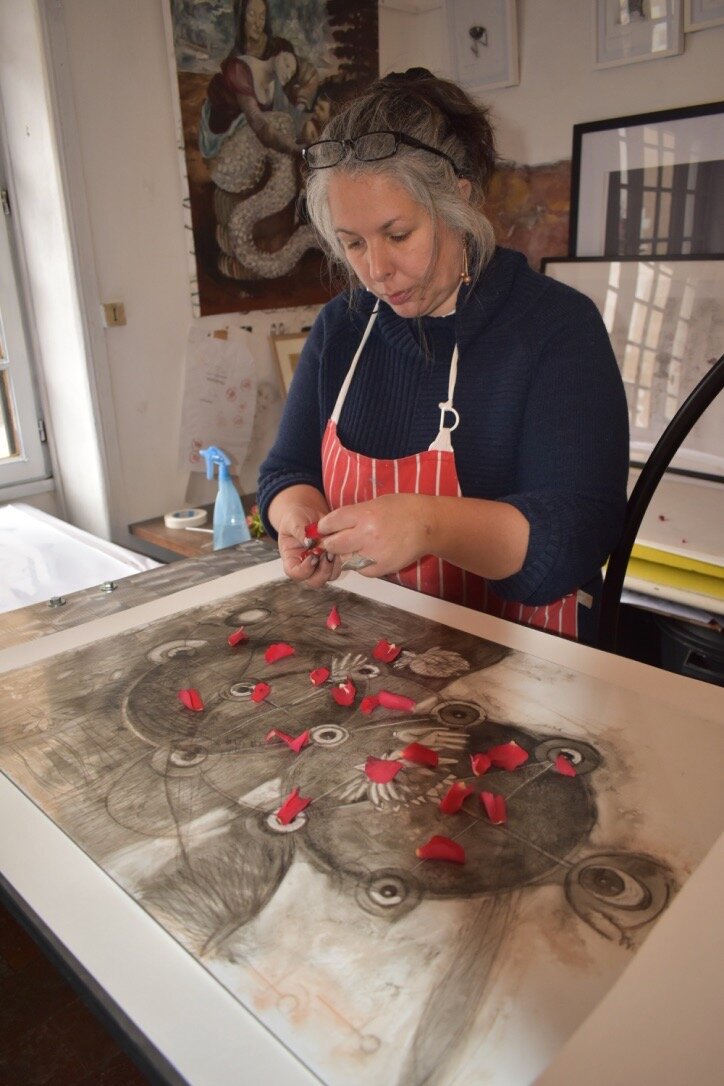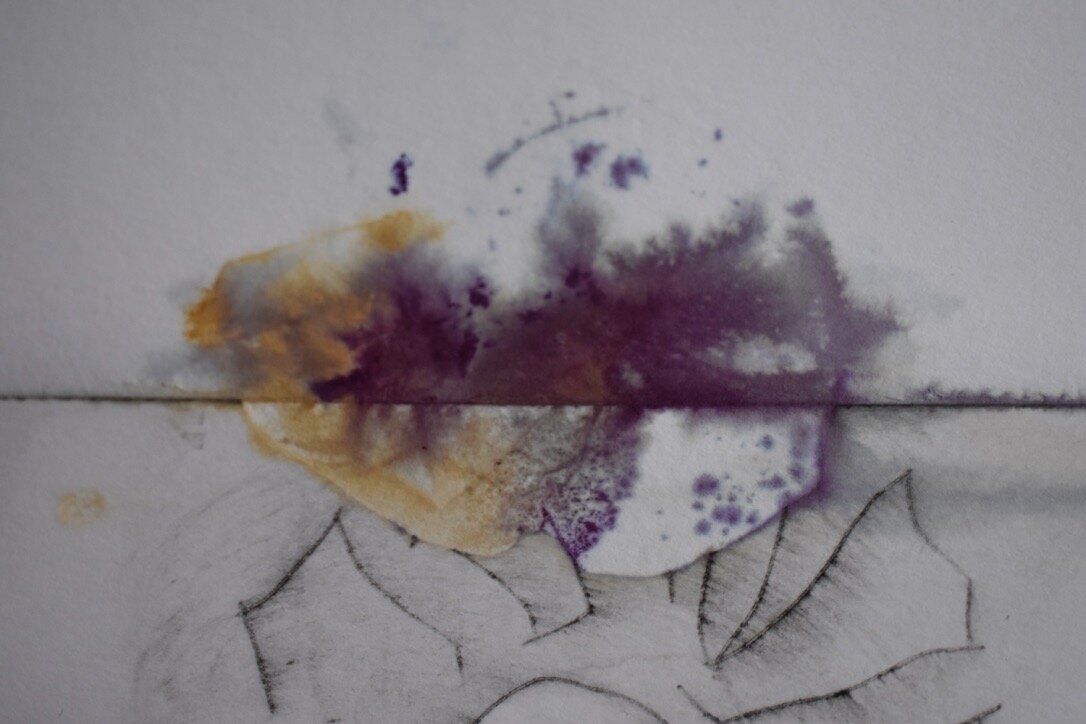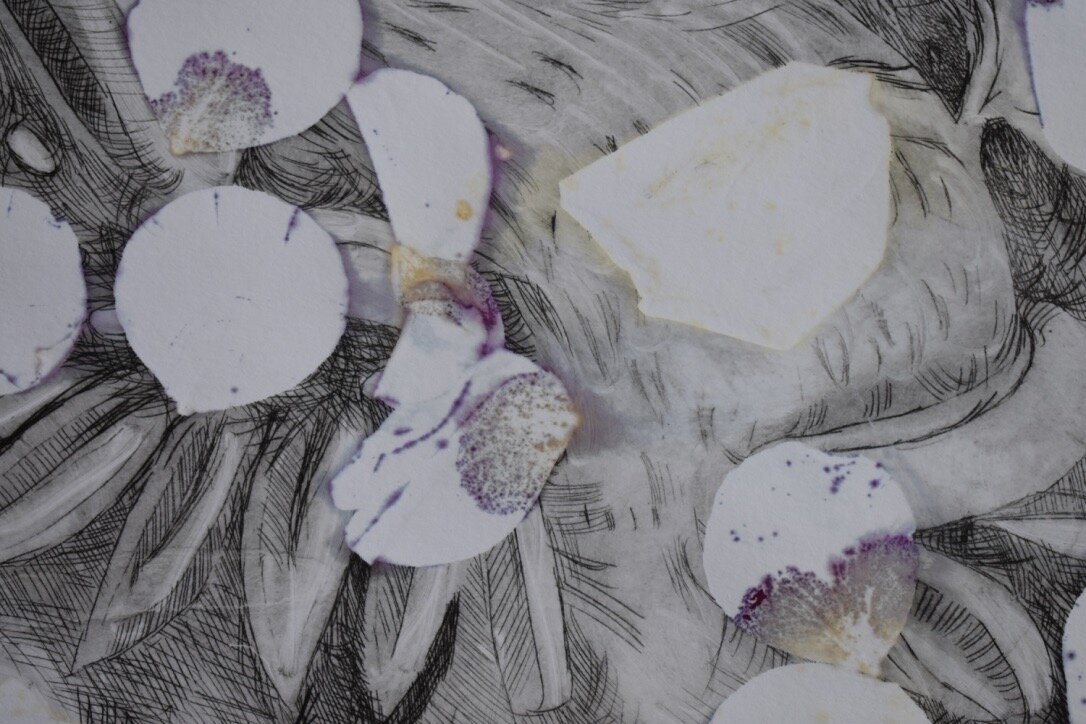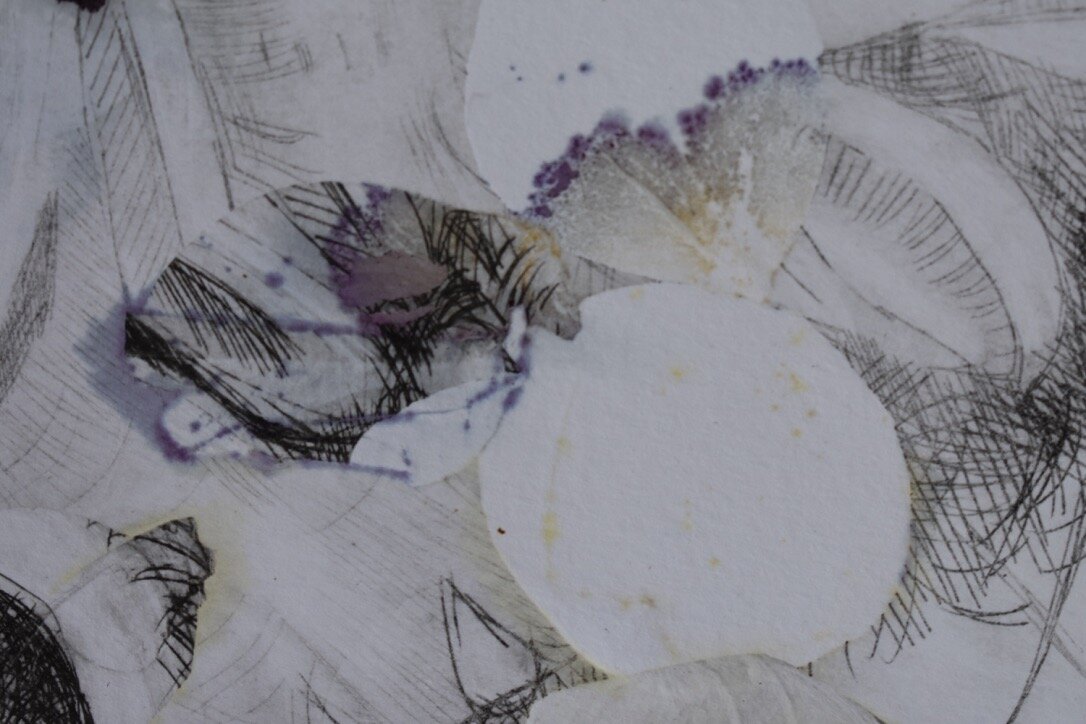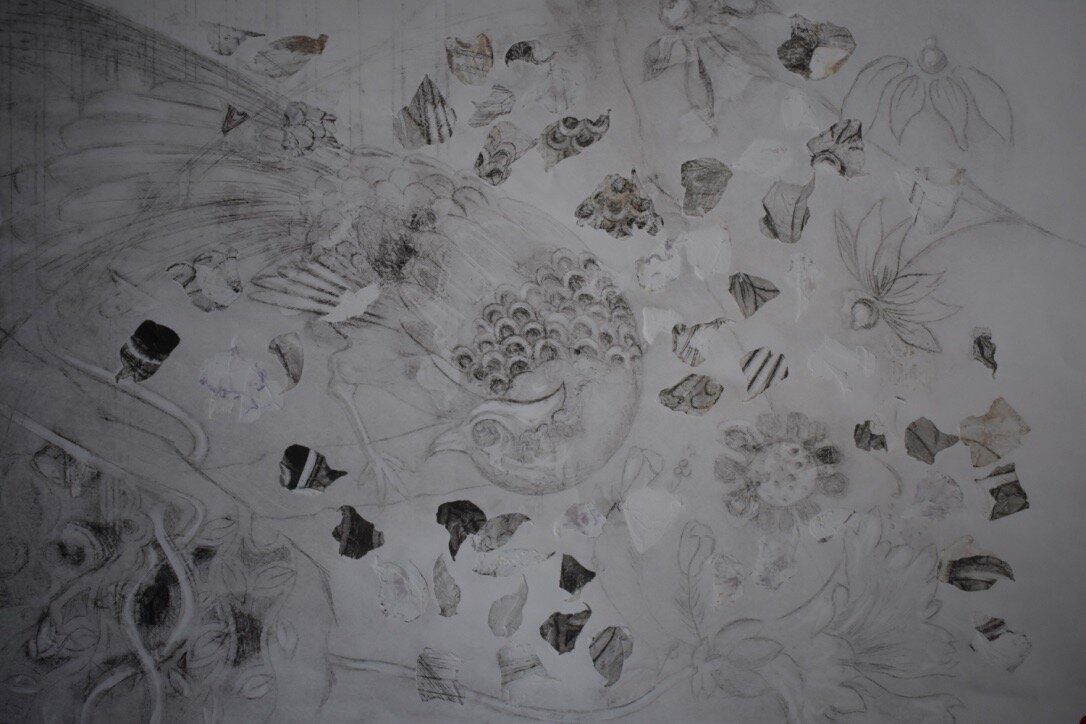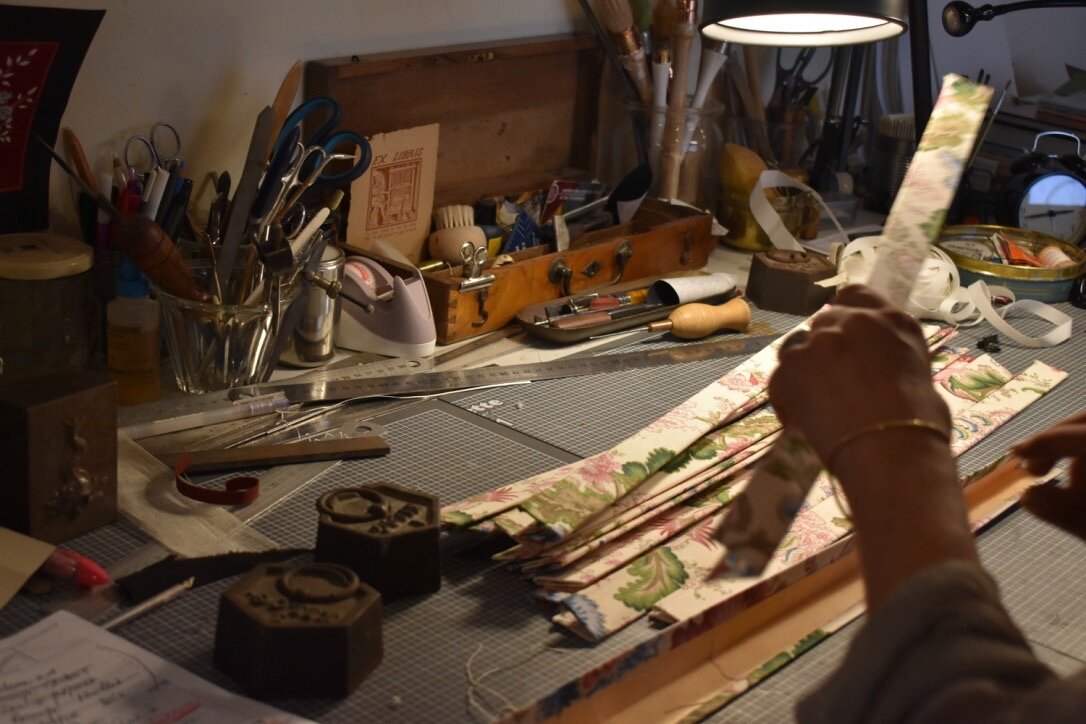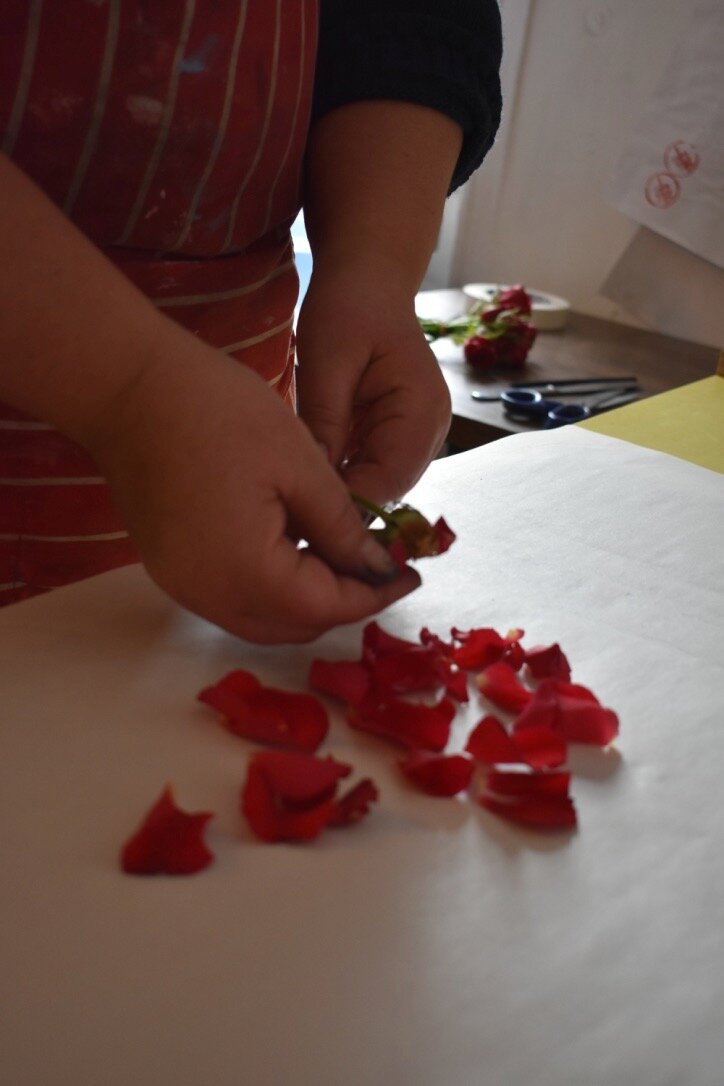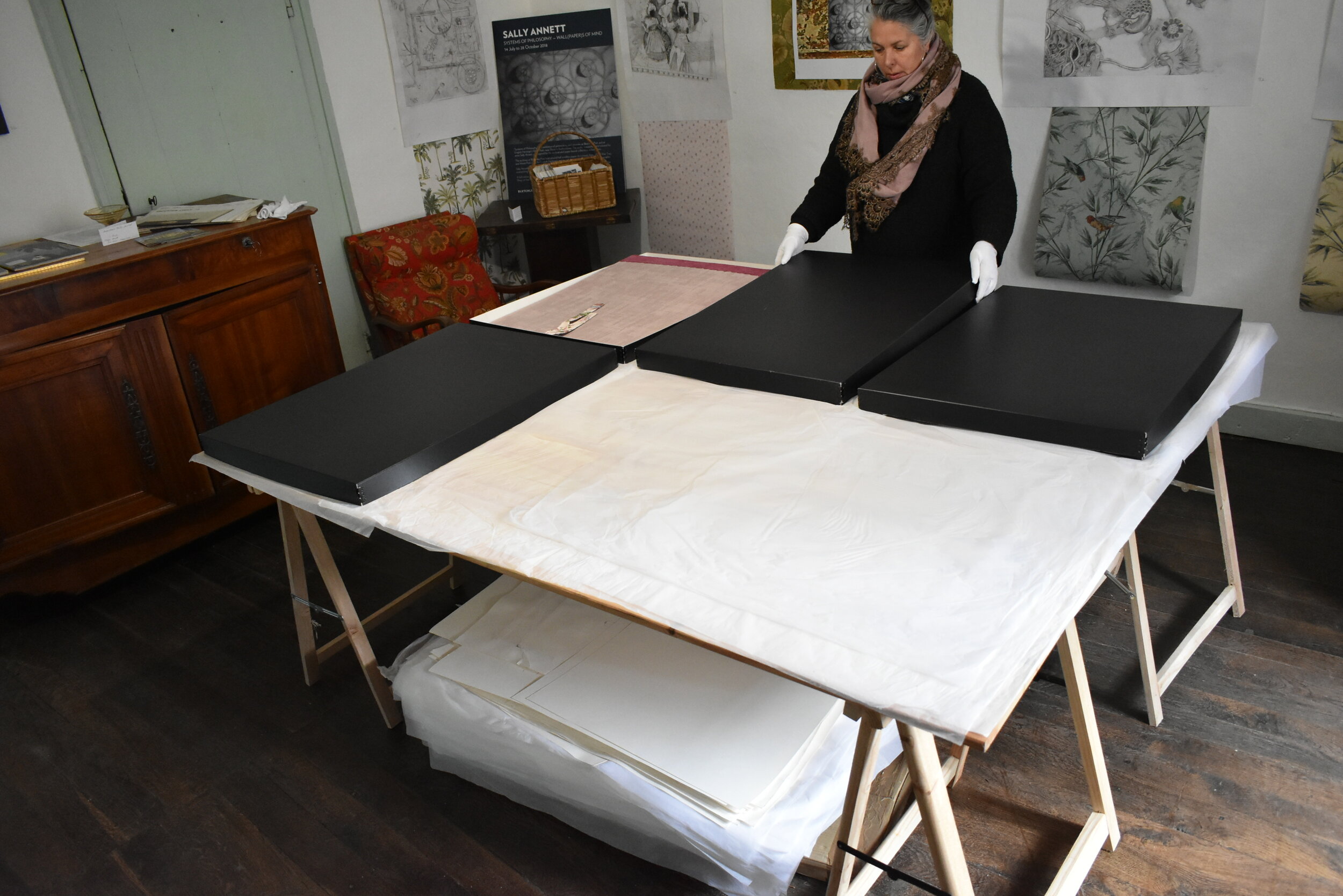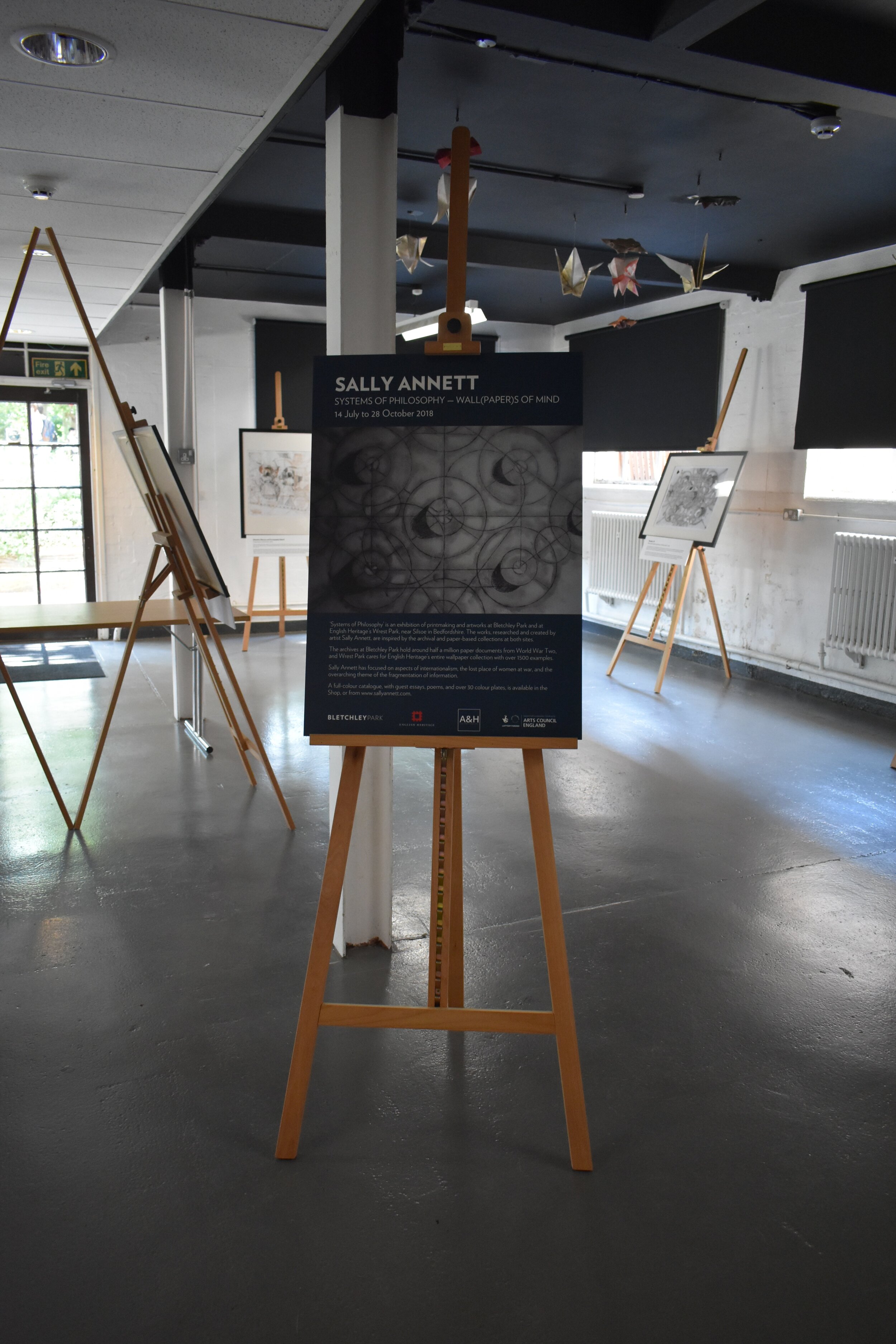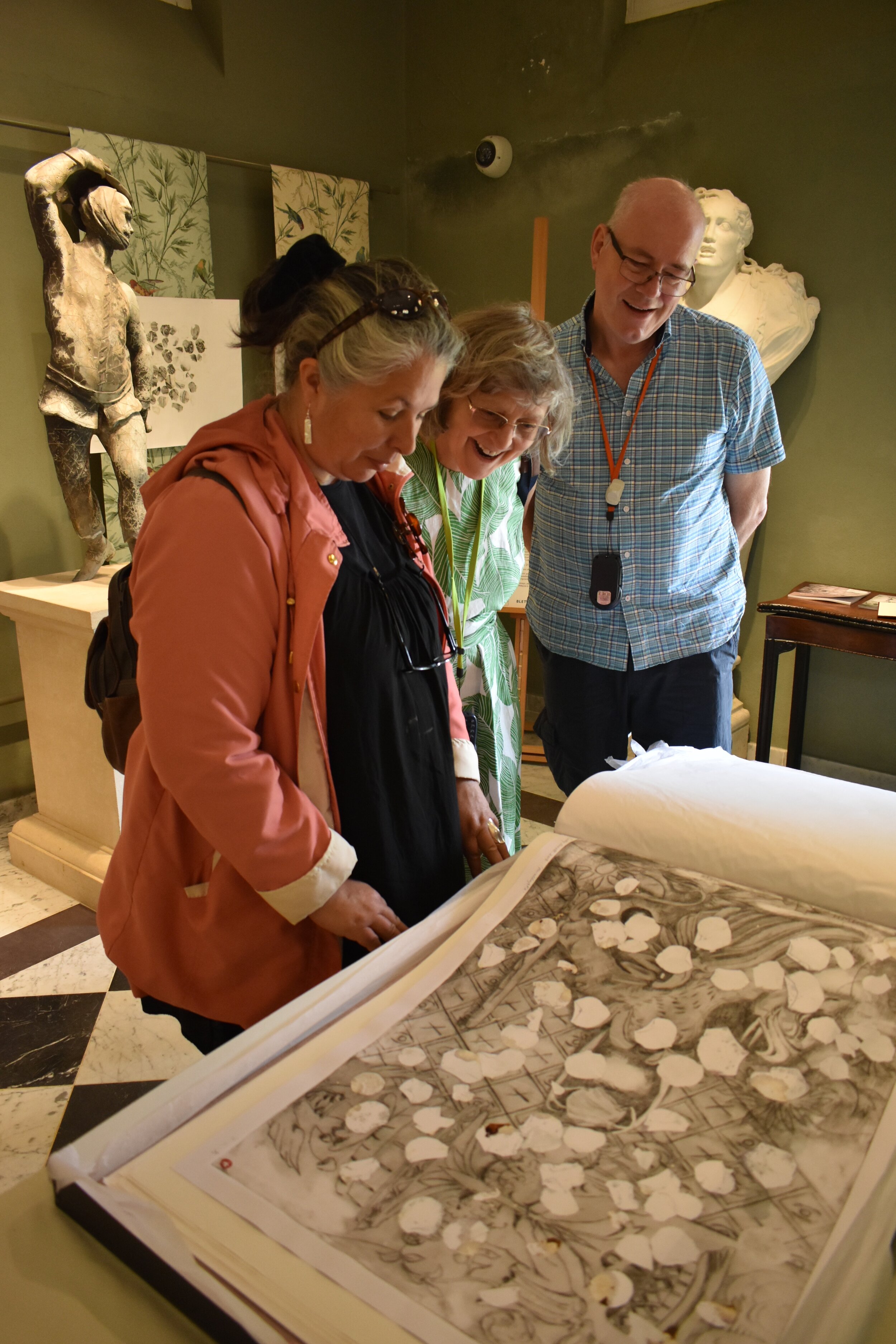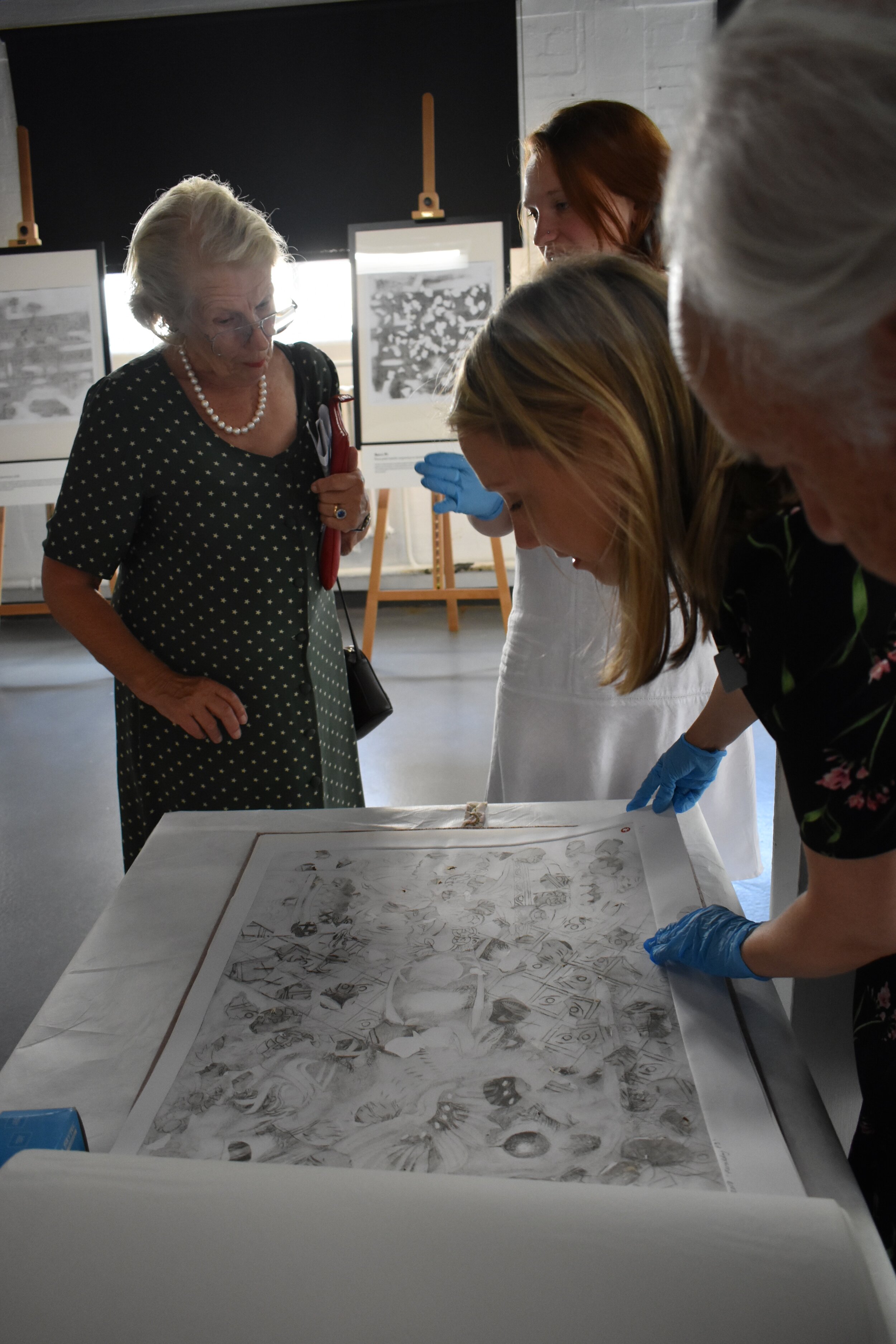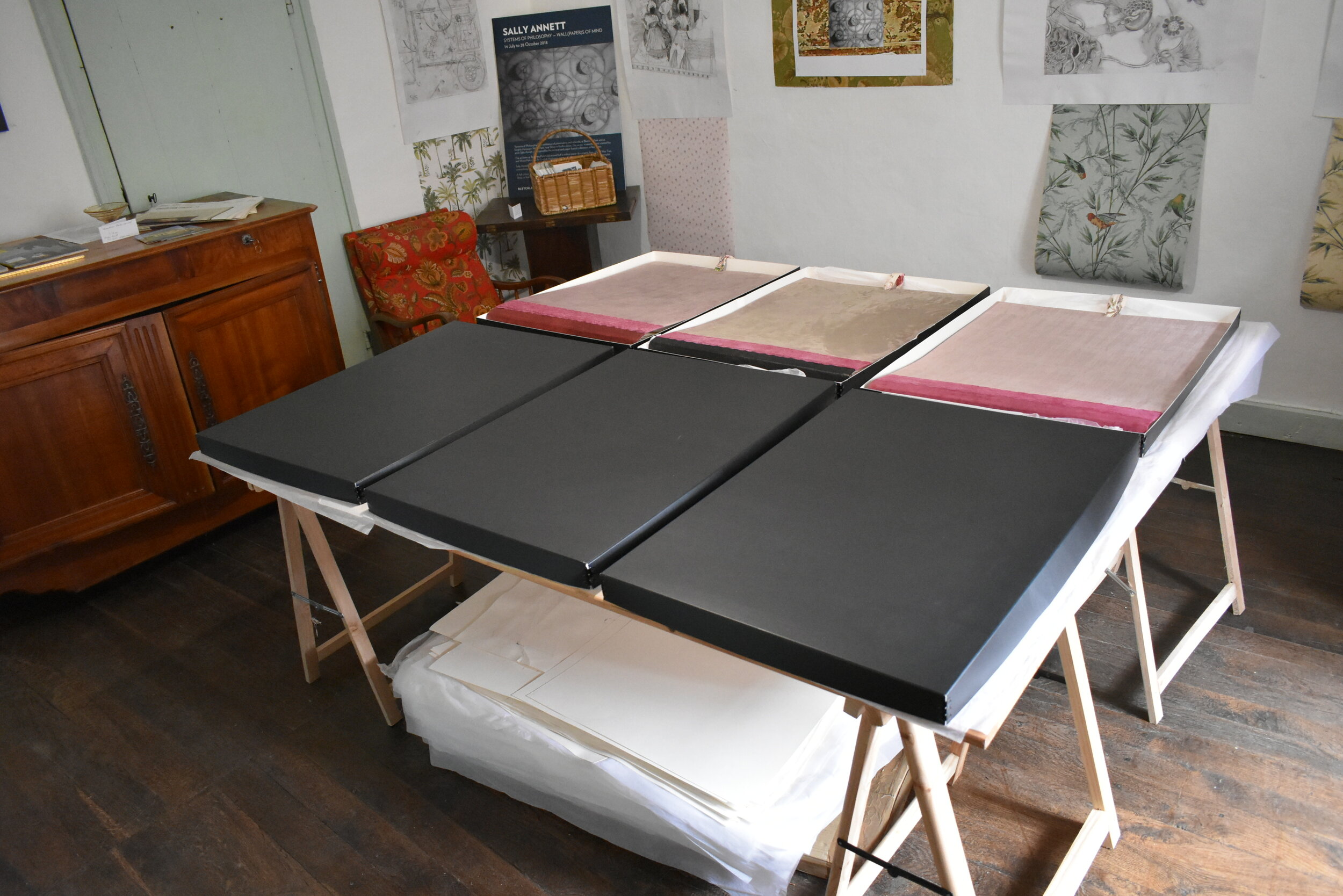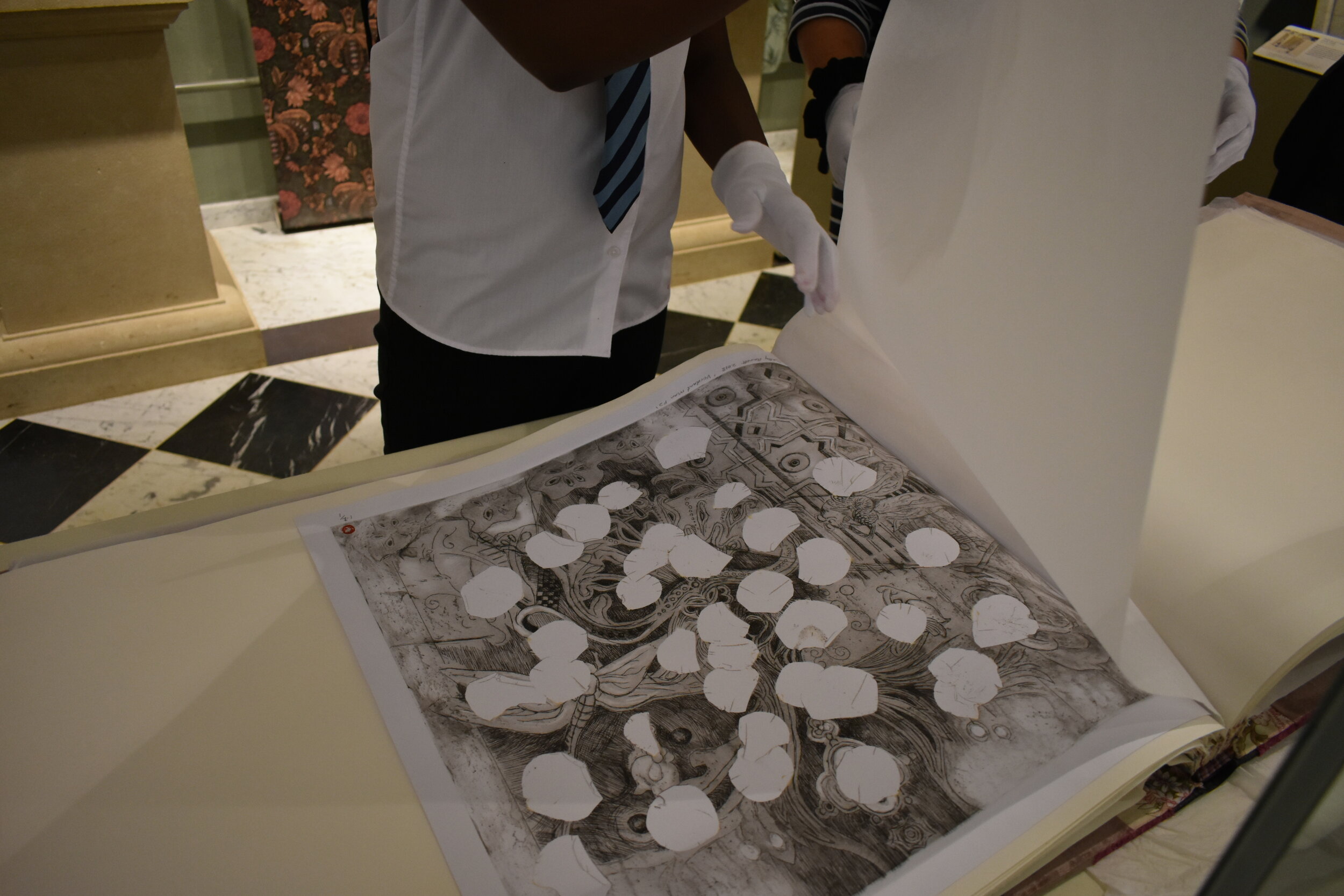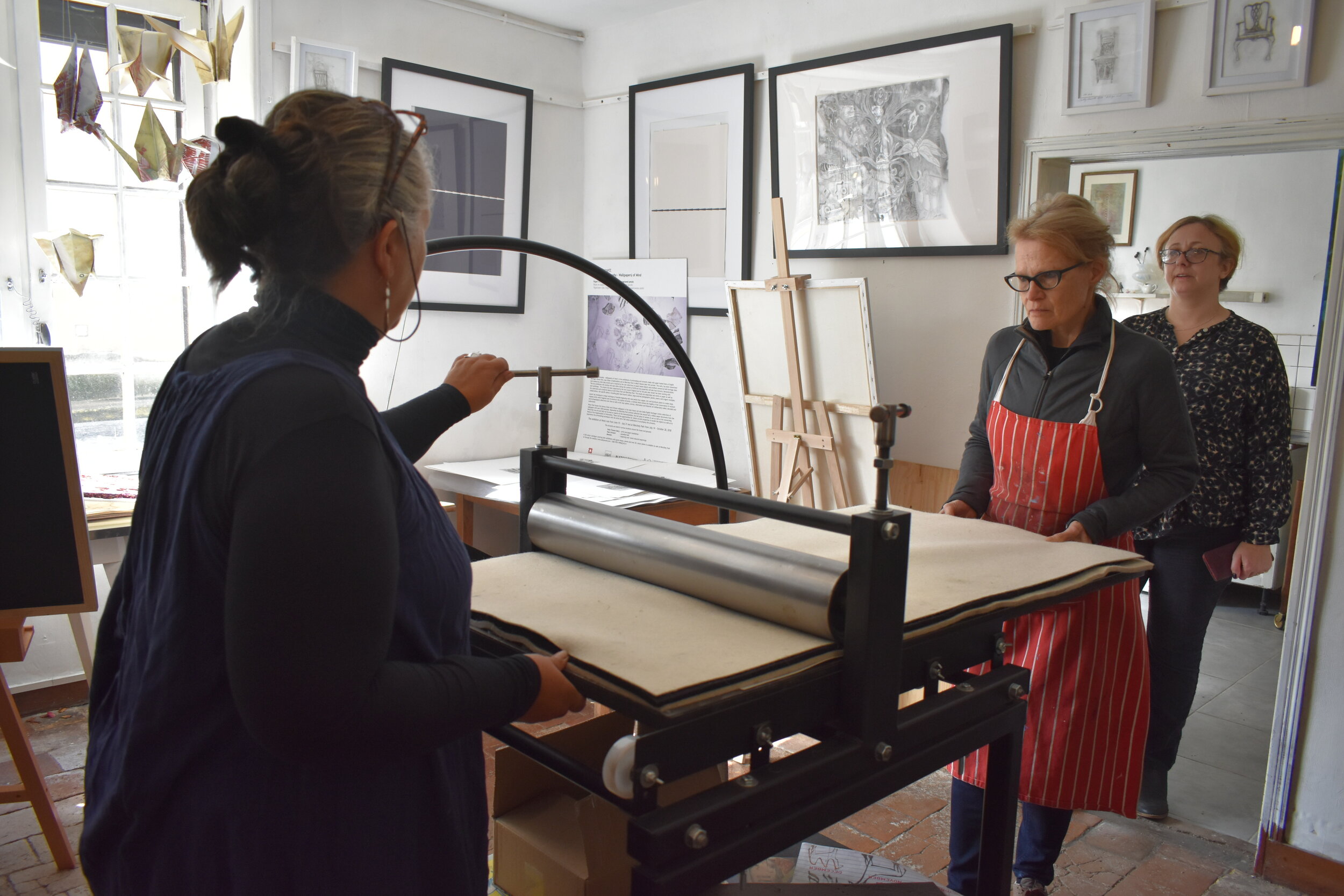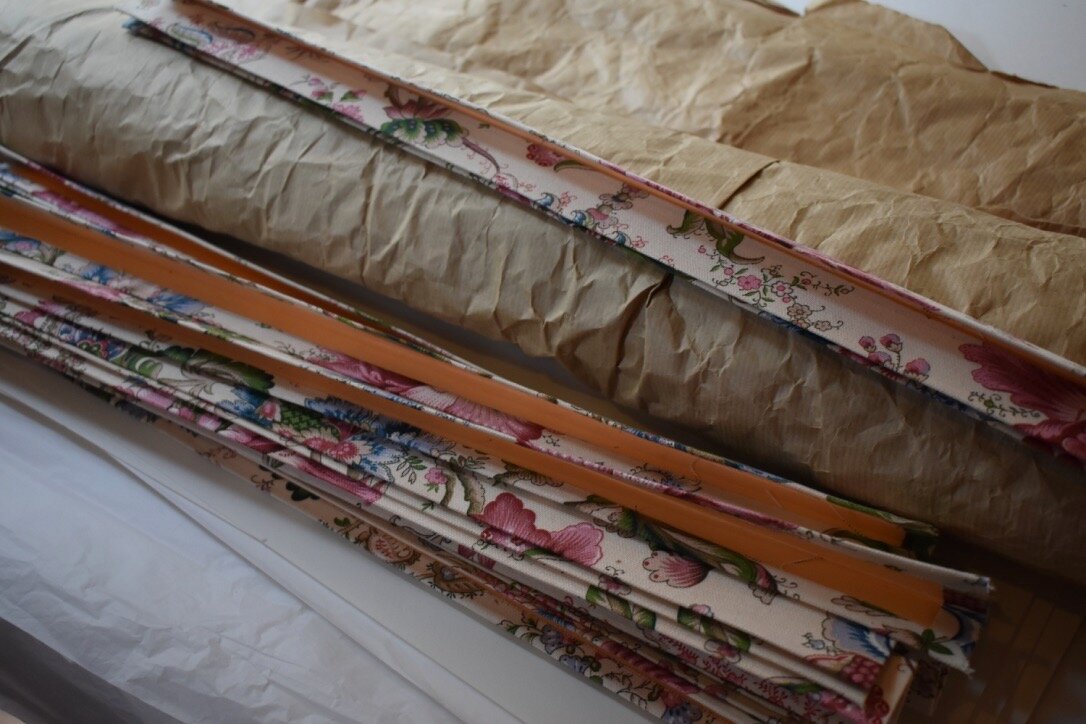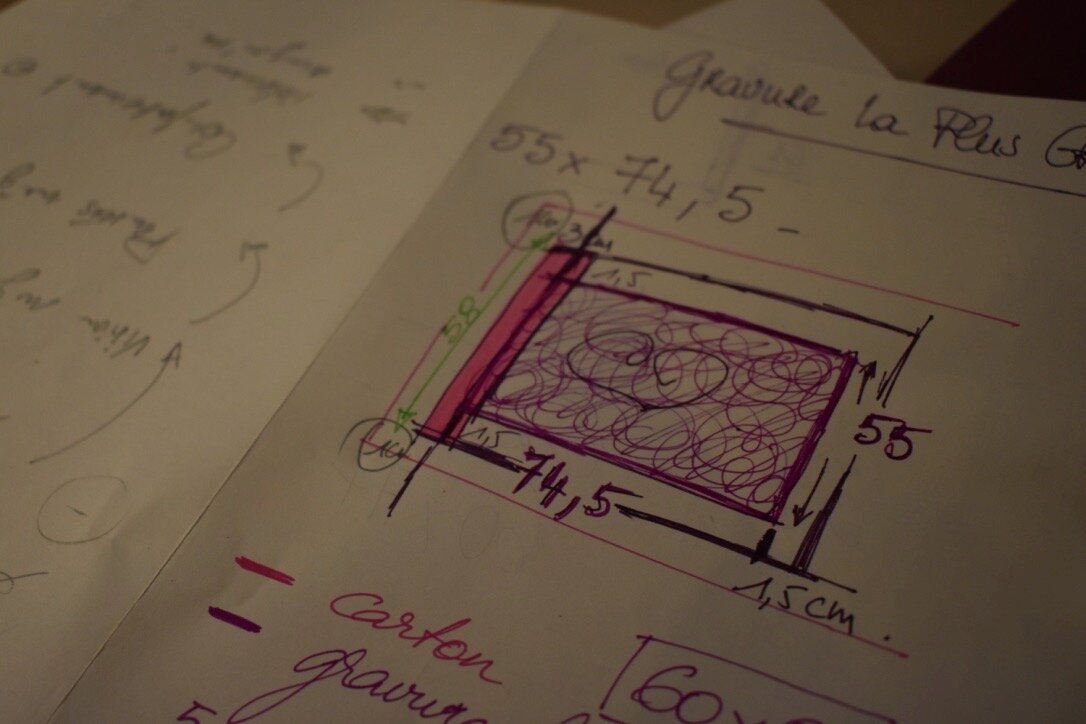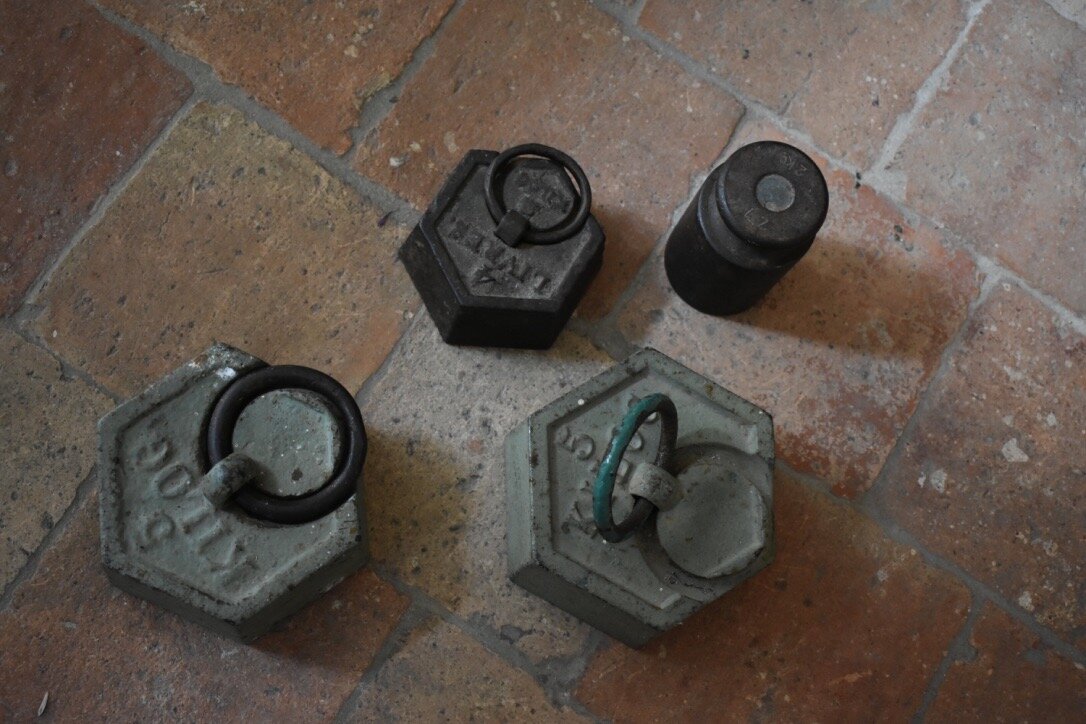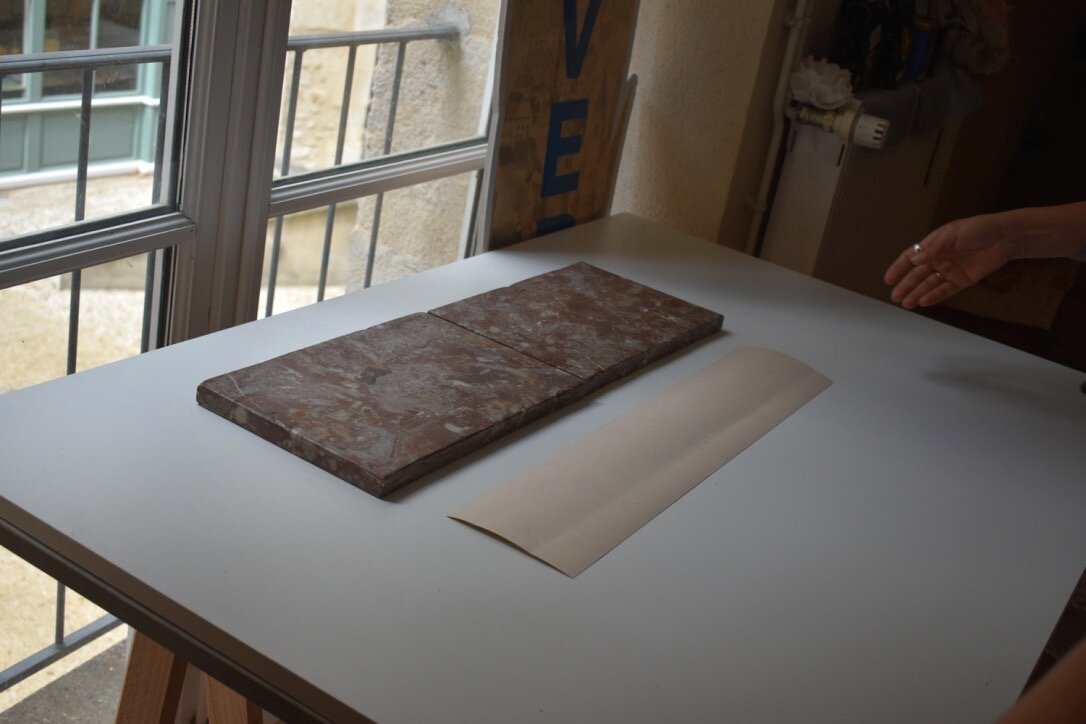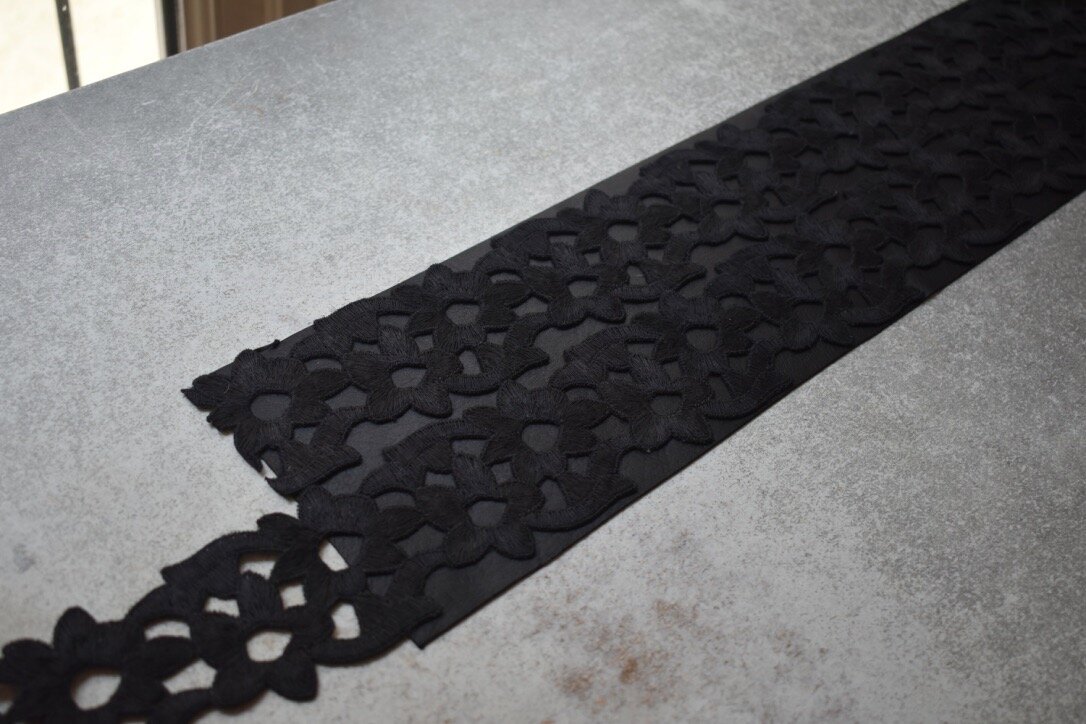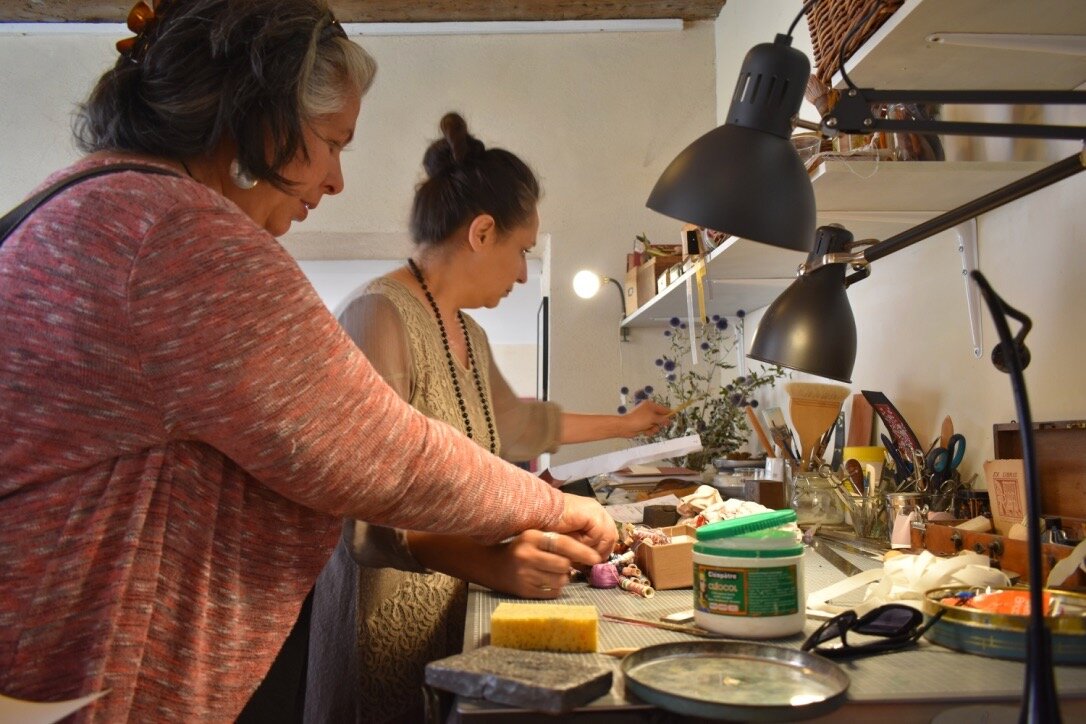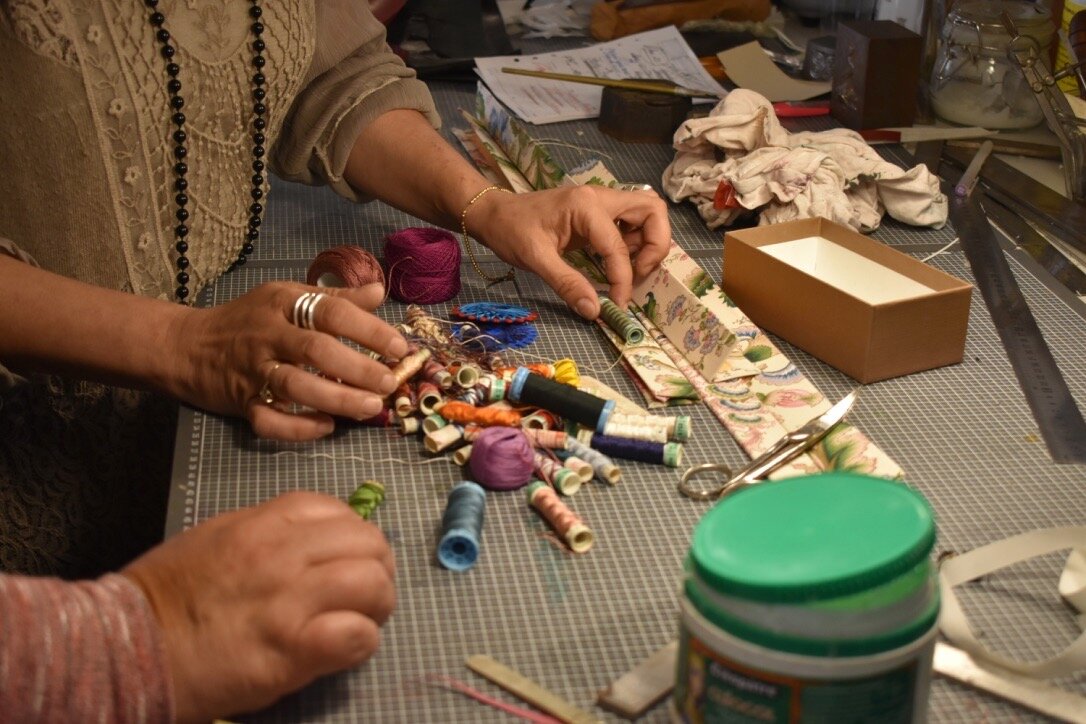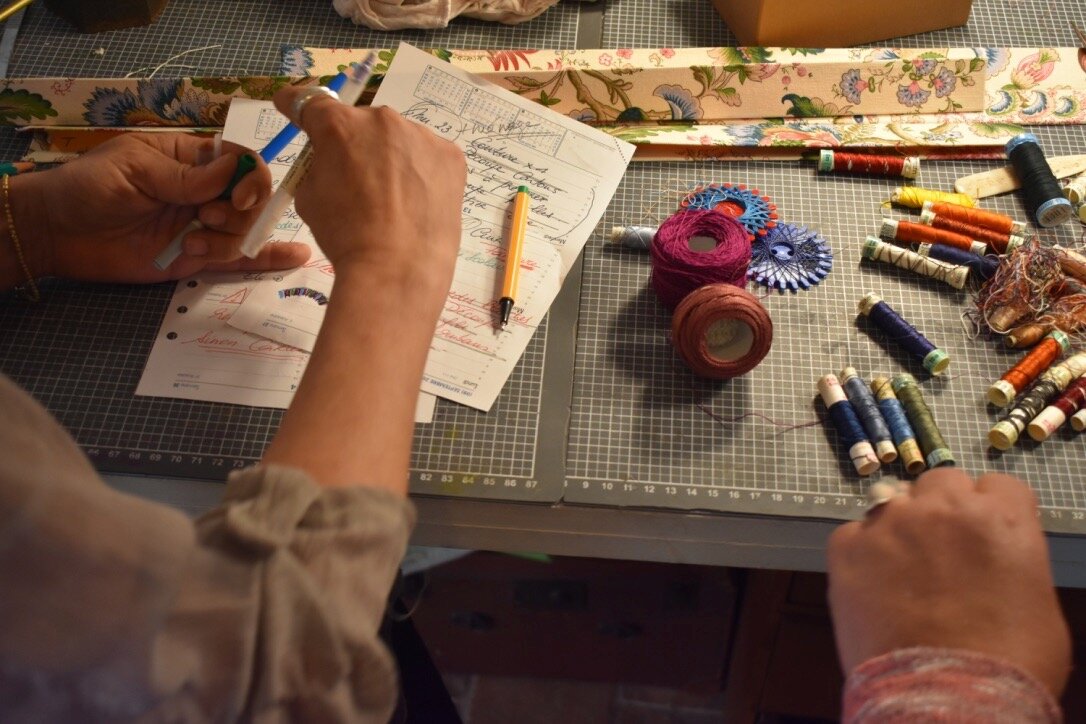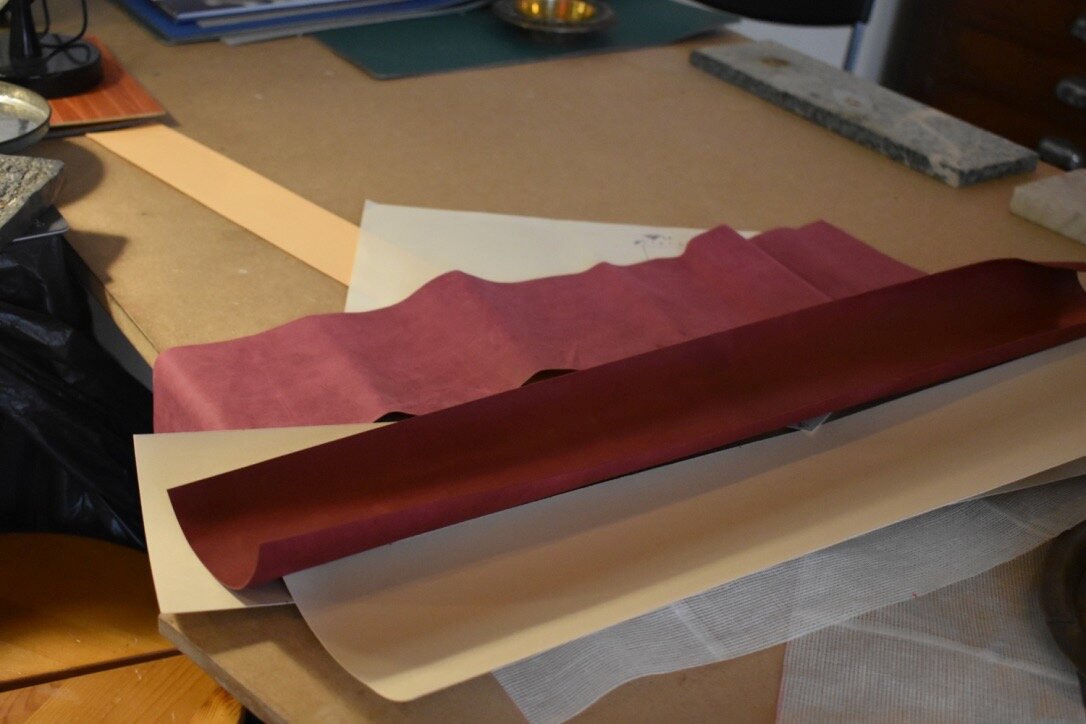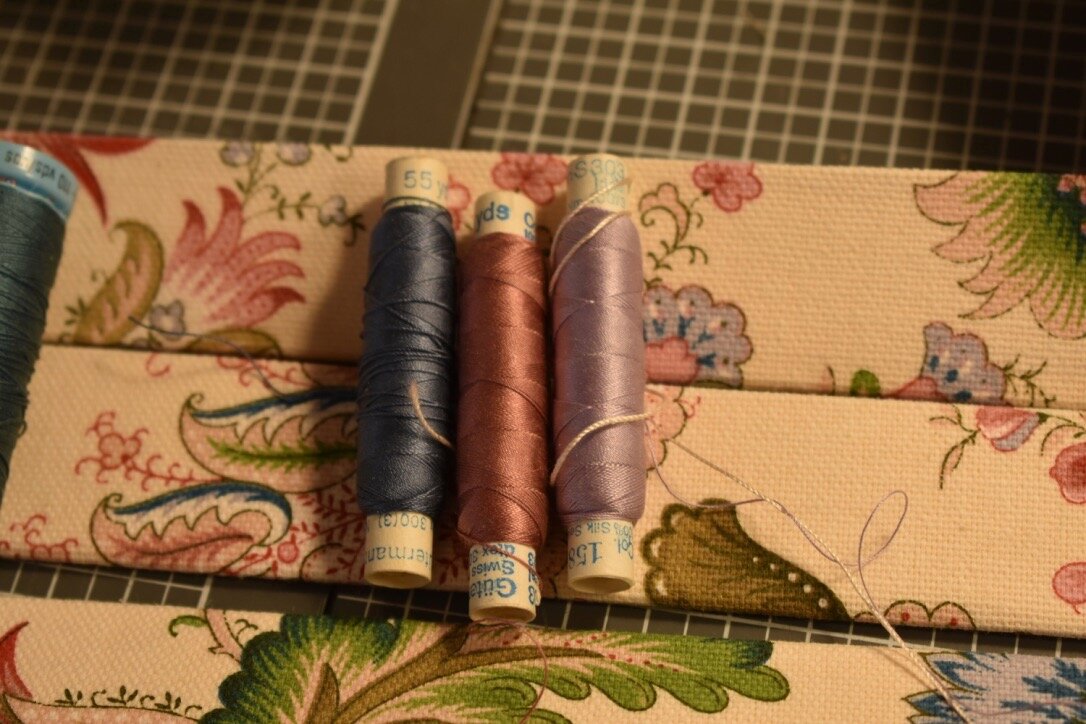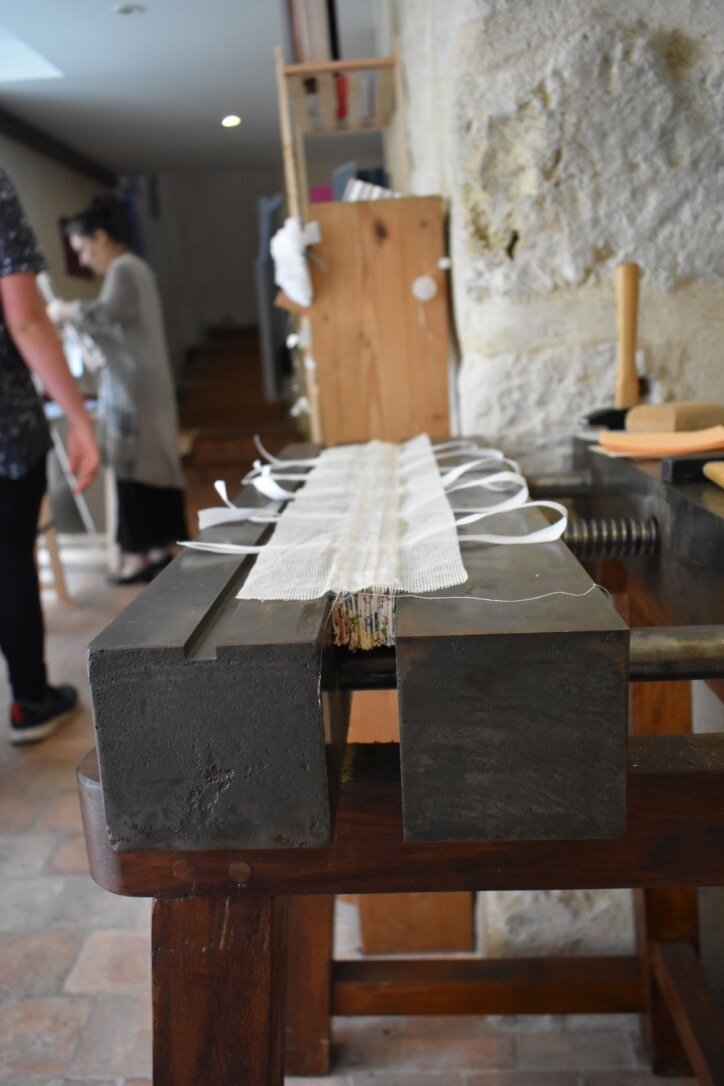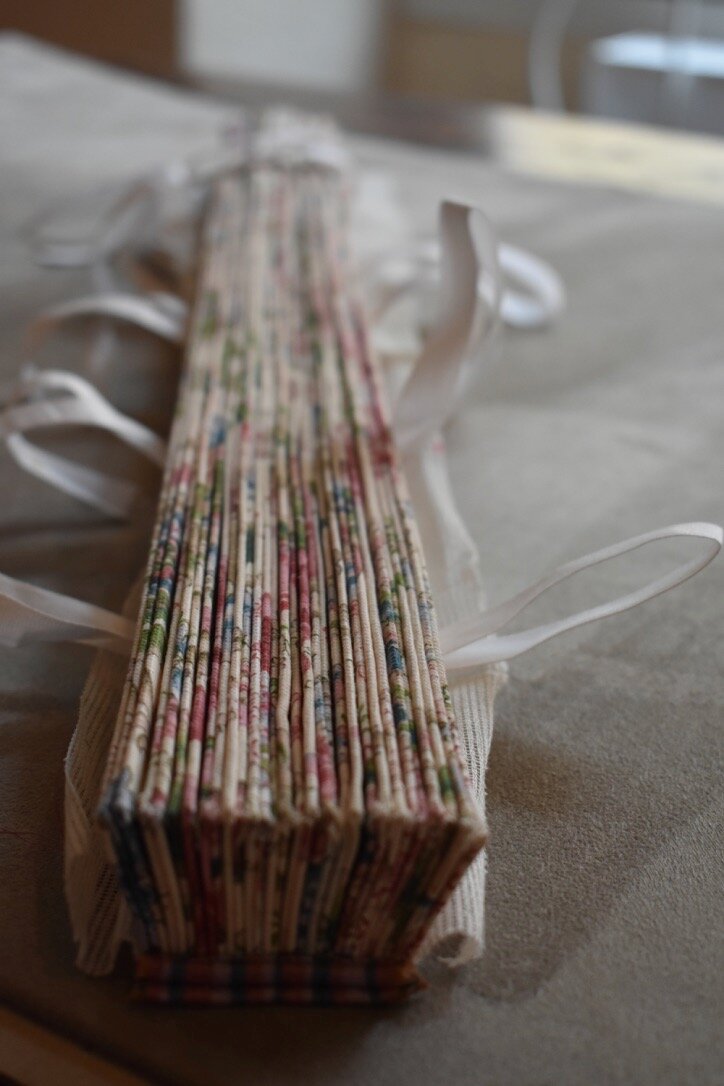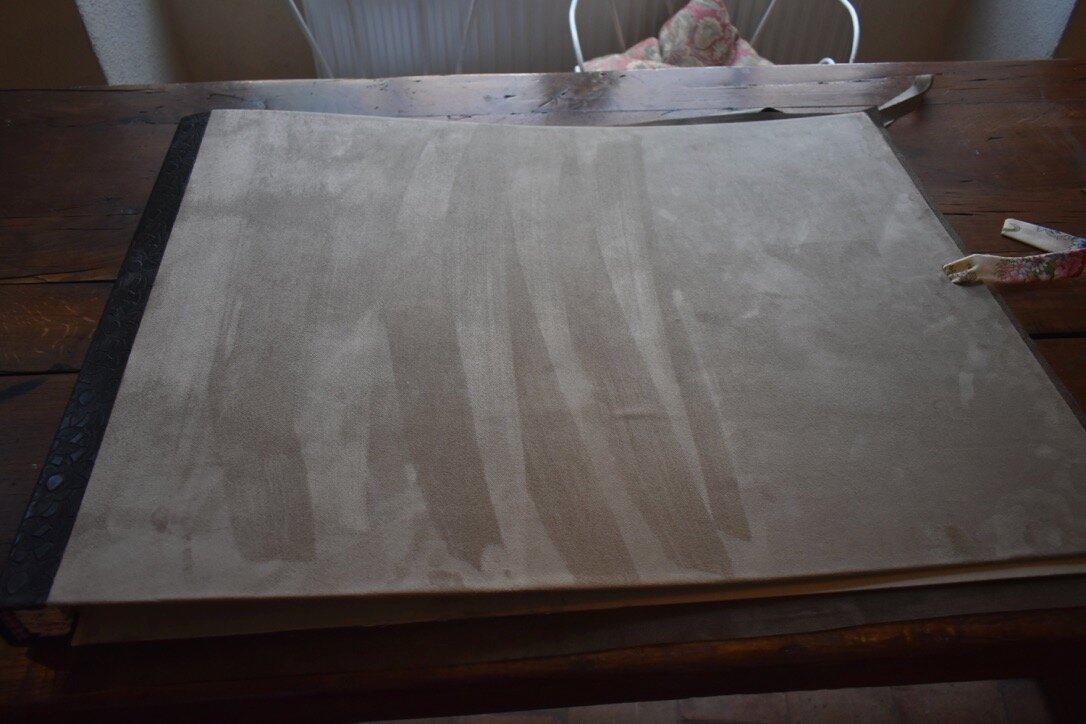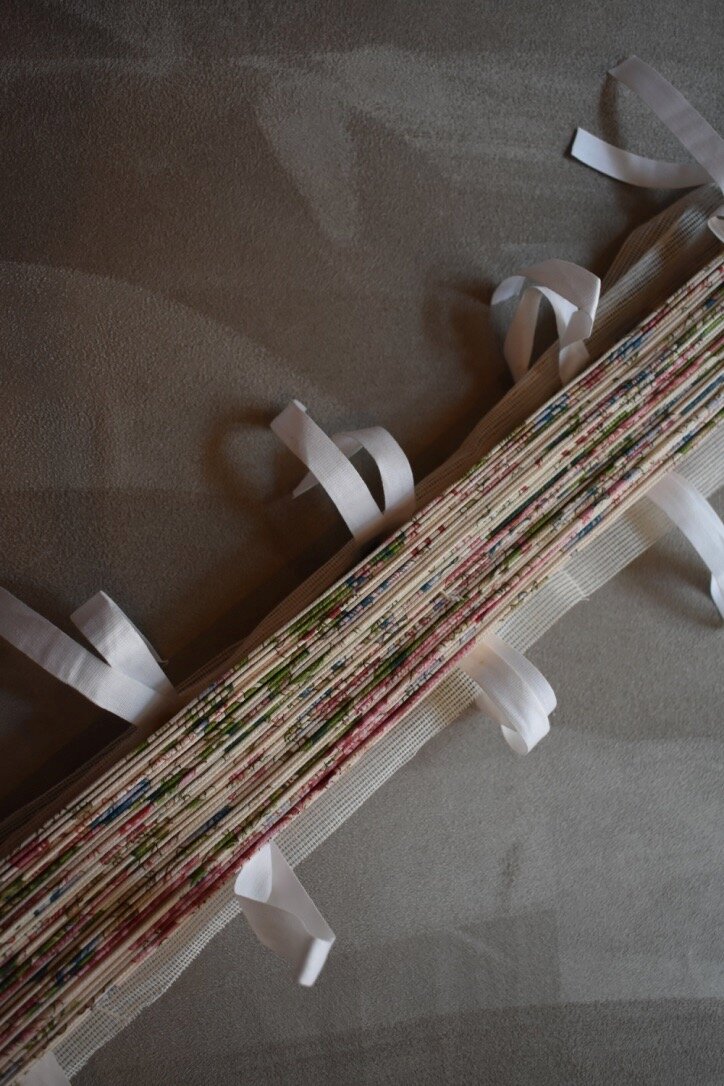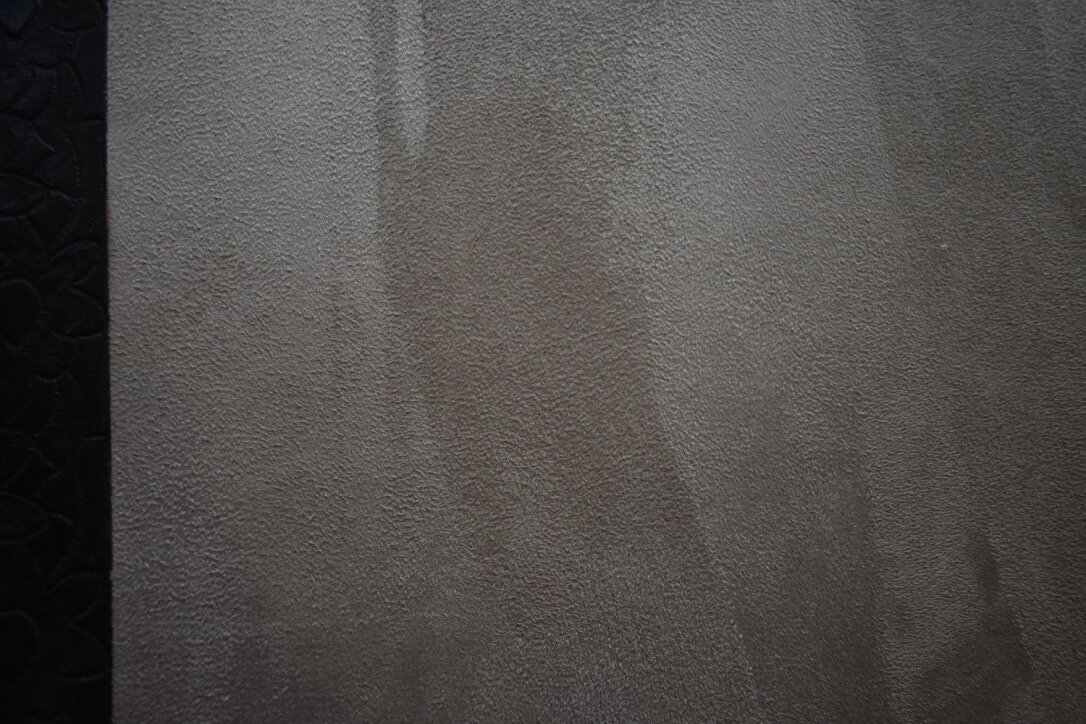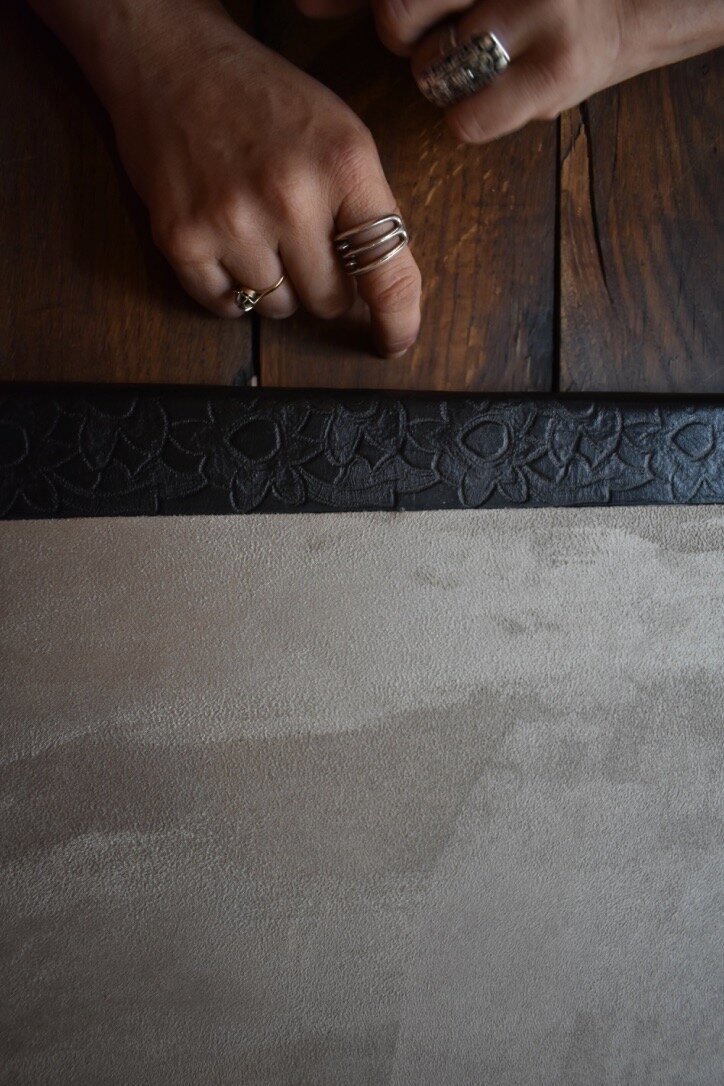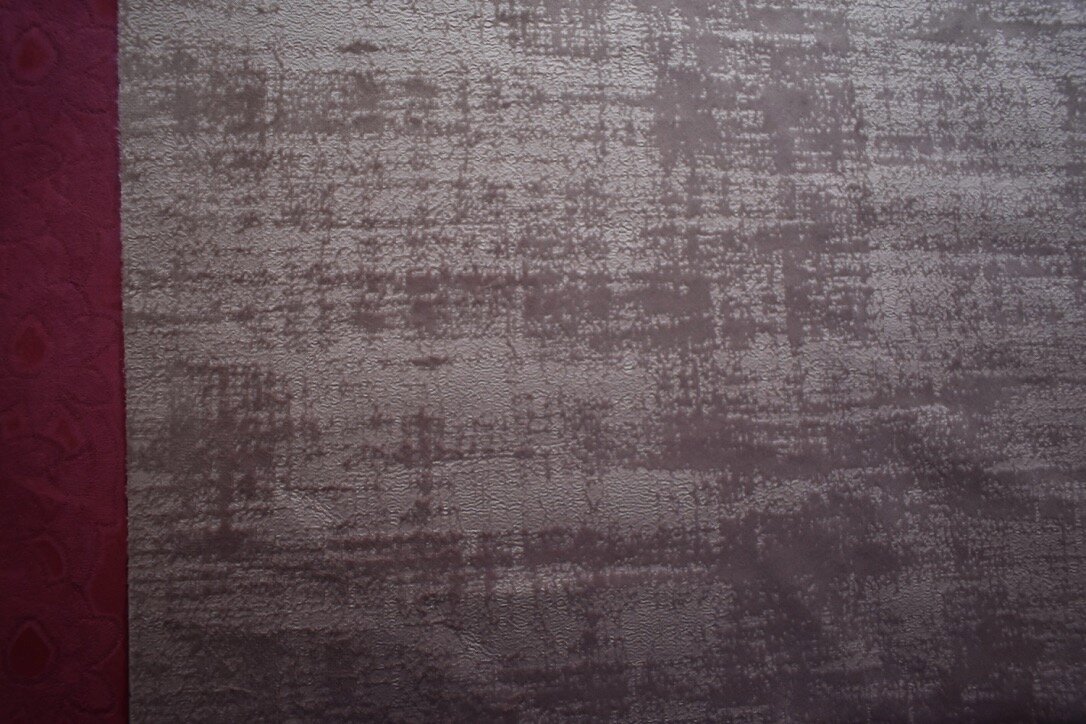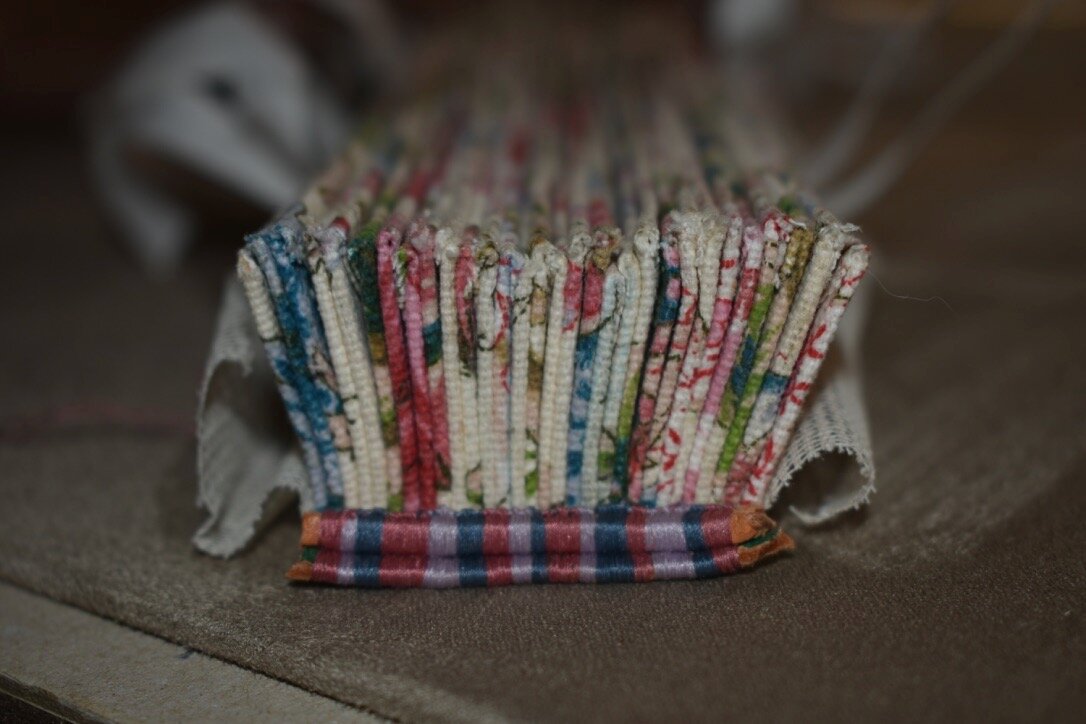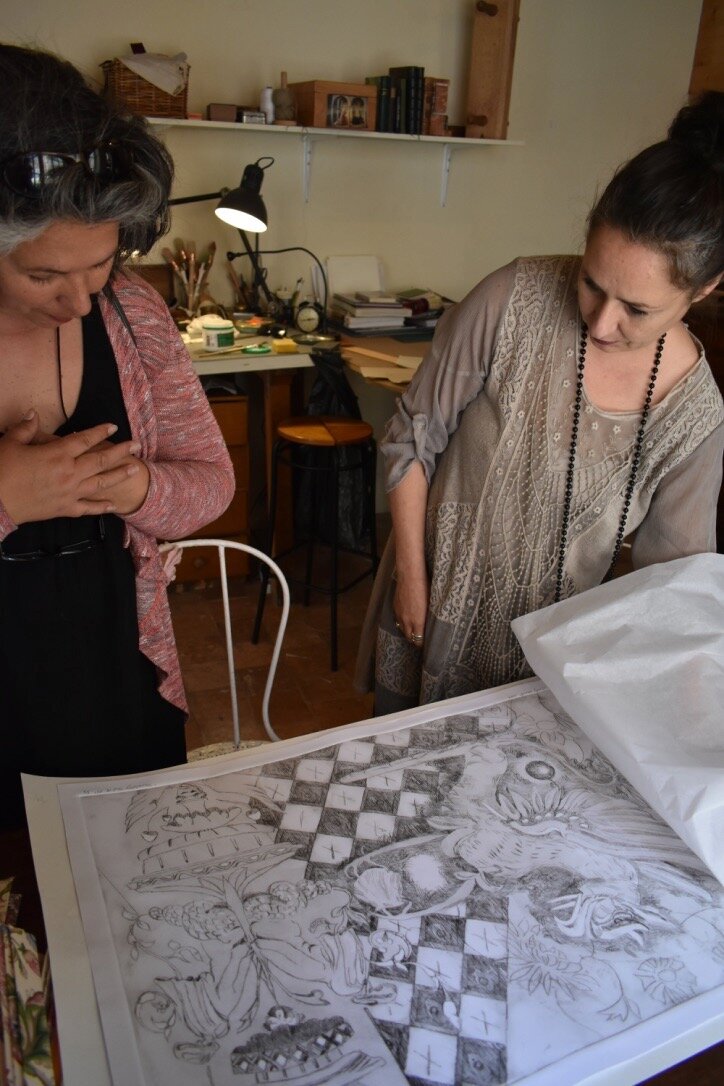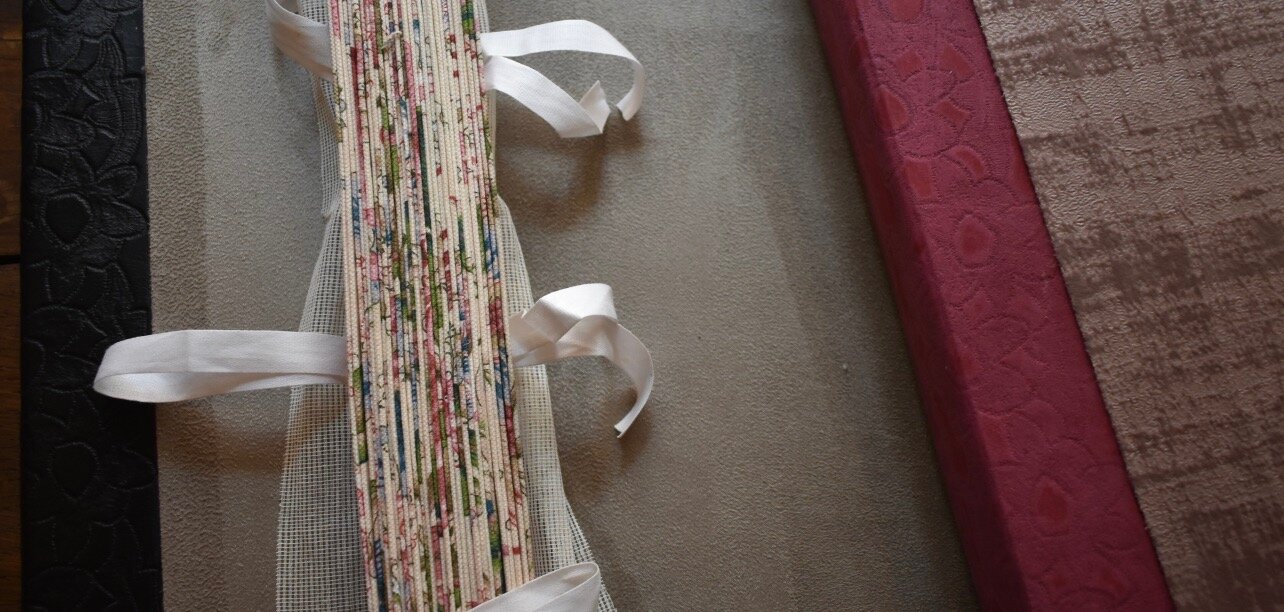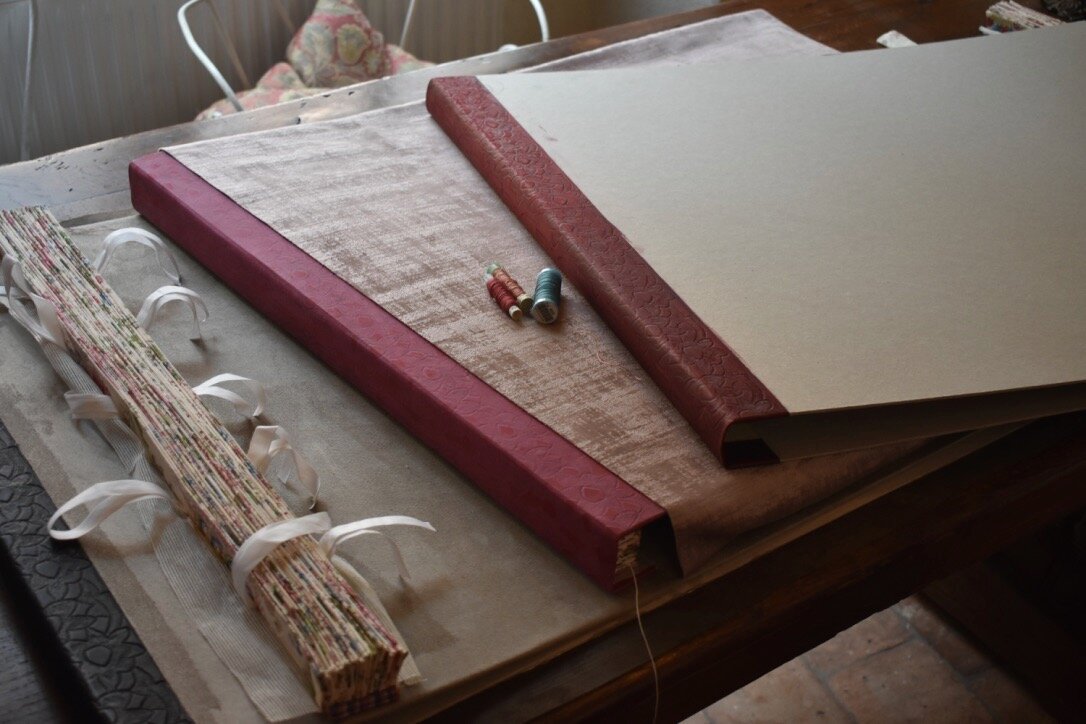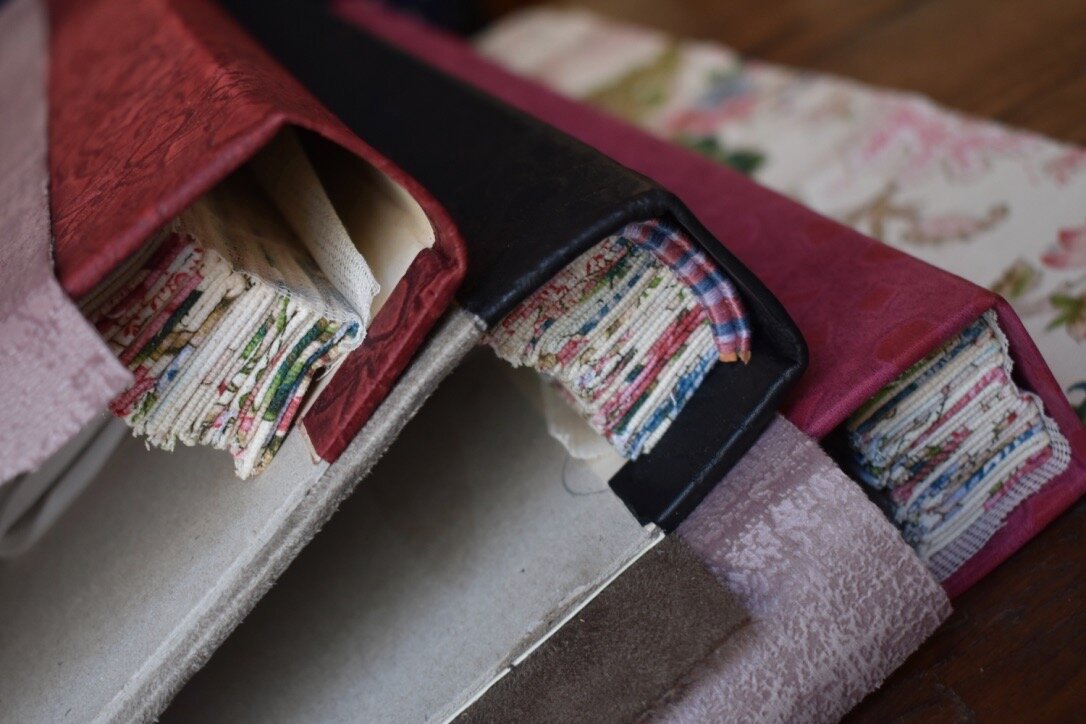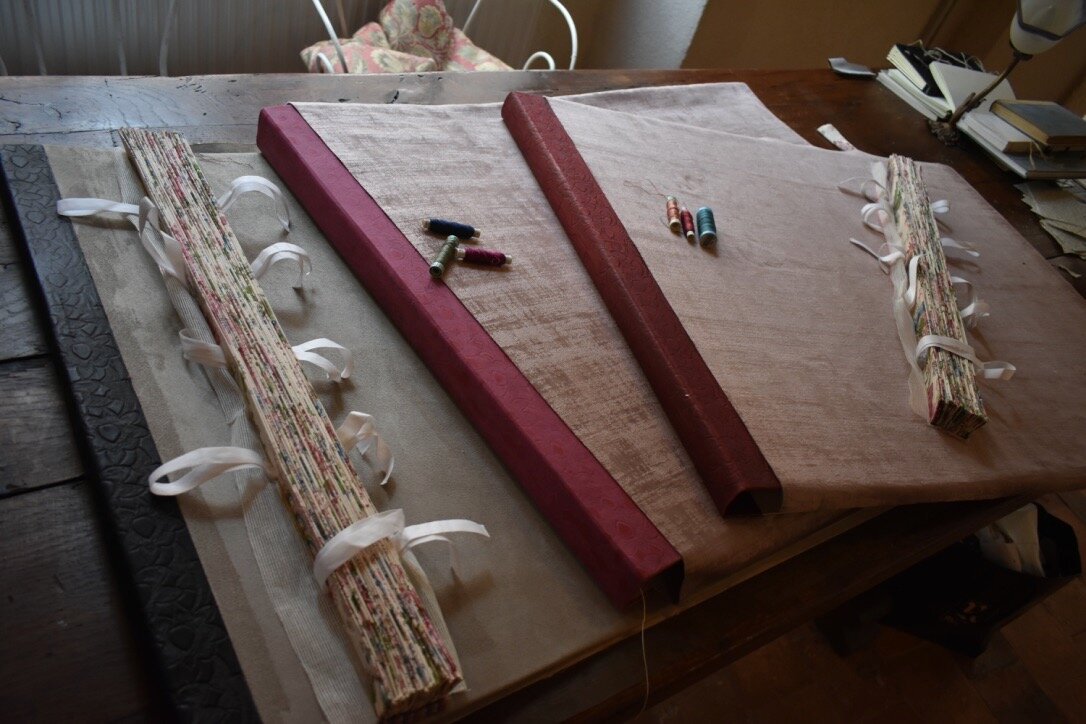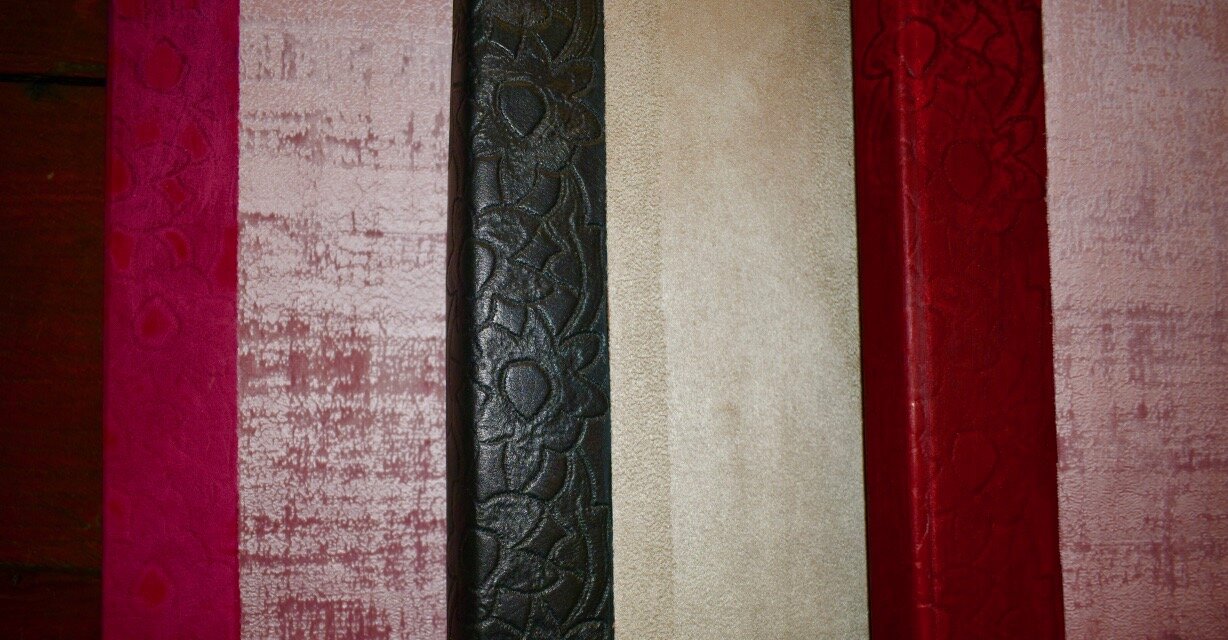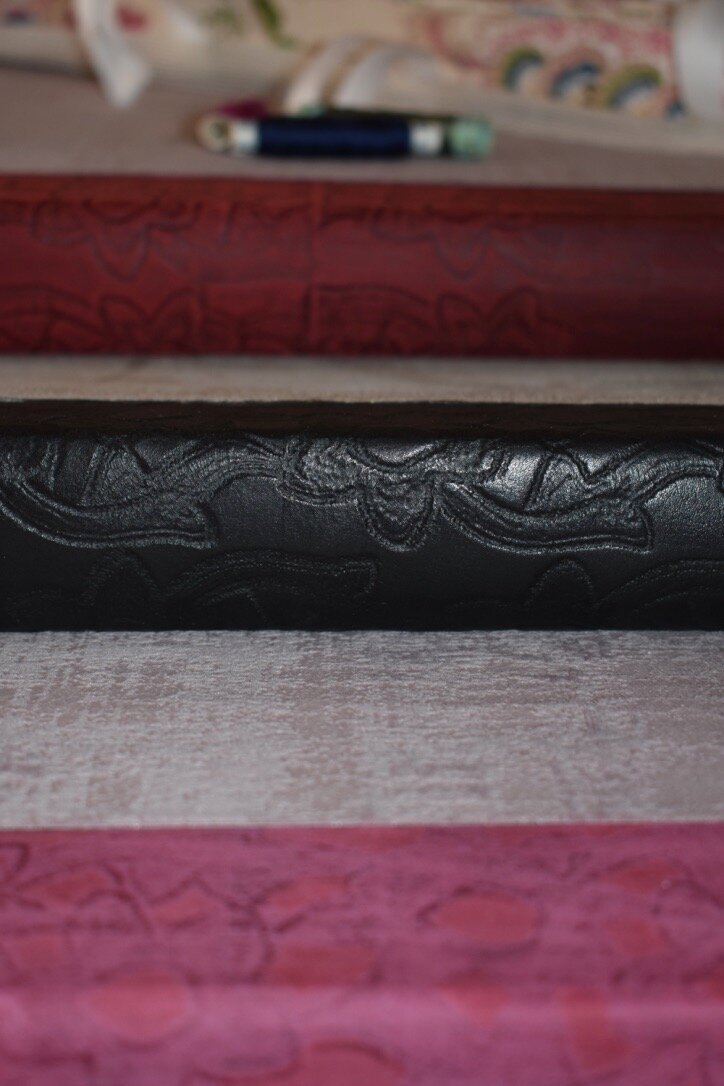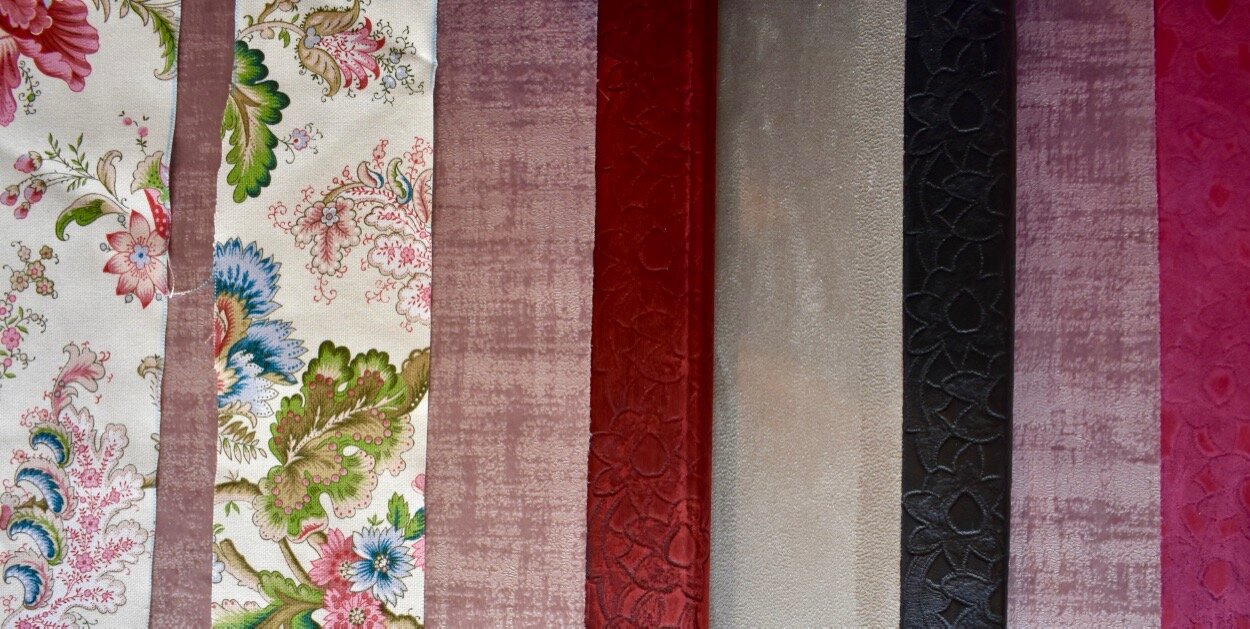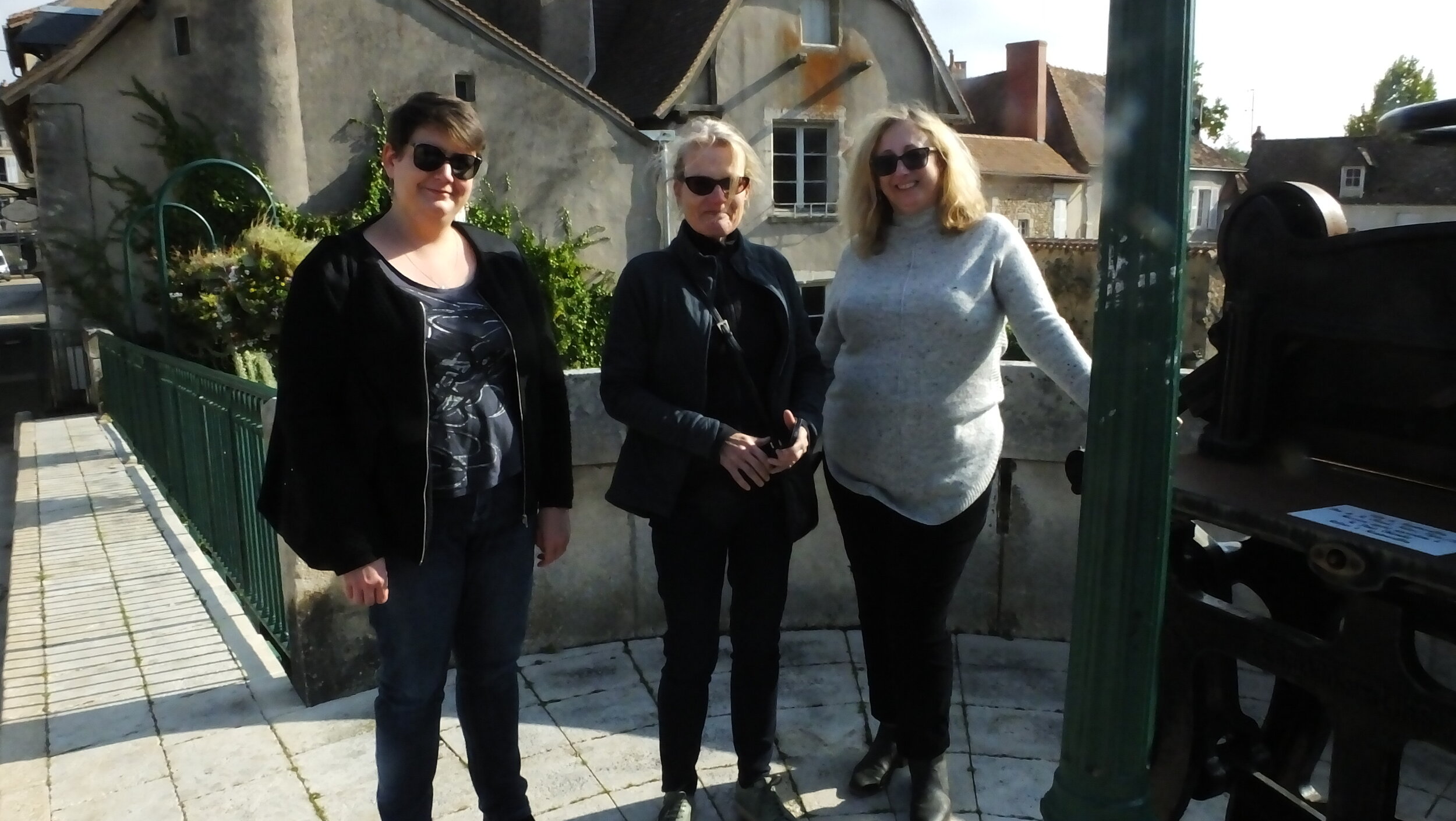Systems of Philosophy - Wall(paper)s of Mind Part 1 : Making 'The Codex'
Systems of Philosophy - Wall(paper)s of Mind was an exhibition of my printed works, on paper, metal and in book format, which was shown in 2018/2019 at Bletchley Park and Wrest Park (English Heritage) in the UK and at the ATELIER MELUSINE France.
The sources of inspiration for the works were the two extensive collections of paper which are held and displayed in the two buildings. A 100 page full colour catalogue was produced alongside the exhibitions which were funded by Arts Council England. Collaborators included Susan Johanknecht, Eva Loubrieu, Elise Hardequart, David Hancock and Rowena Willard-Wright.
This text focuses on the production of the ‘Codex’ elements of the project, which were bound for me by Eva Loubrieu, La LIVRESSE D’Art, Montmorillon.
’The Codex’ are influenced by the processes of coding and encryption, for which (de-coding) Bletchley Park is world famous, the 2014 film ‘The Imitation Game’ tells one aspect of its history and is filmed on location at the museum. Whilst working I invented a dry point etching process called, ‘rose petal transfer engraving’, it is a tri-part method of engraving which uses rose petals as both support and transfer. It reflects, directly, the process of using encryption: you make the code; you scramble the code and you recreate the code. I will dedicate another text solely to this print making technique. The codex are the amassed collections of prints, from both sources, which show the original print, the scrambled prints and the re-coded/reconfigured images. In some instances there are four stages - the last being almost entirely abstracted.
Below the codices on display at Bletchley Park UK, Wrest Park UK and ATELIER MELUSINE Fr
The Codex reference the history of code, linked closely to those of linguistics, religion and the sciences and are a tribute to the Polish mathematicians, Marian Rejewski, Henryk Zygalski and Jerzy Różycki and also to the polymath, Benedictine monk and later Bishop of Sponheim Johannes Trithemius, whose students included Heinrich Cornelius Agrippa and Paracelsus.
Above and below are images of the lengthy process of selecting the fabrics and images, the bookbinding and presentation of the works in the UK and France in 2018/19.
These are the largest works Mme Loubrieu has ever been asked to bind and are currently on display in the Atelier LIVRESSE D’Art in Montmorillon to accompany of my exhibition ‘Trees of Life’ - access is currently forbidden due to the Corona Virus lockdown.
Partie 1 : élaboration du Codex
Systems of Philosophy - Wall(paper)s of Mind était une exposition de mes travaux imprimés, sur papier, métal et sous forme de livre, qui a été présentée en 2018/2019 à Bletchley Park et Wrest Park (English Heritage) au Royaume-Uni et à l'ATELIER MELUSINE France.
Les sources d'inspiration des œuvres ont été les deux vastes collections de papier qui sont conservées et exposées dans les deux bâtiments. Un catalogue en couleur de 100 pages a été produit parallèlement aux expositions qui ont été financées par l'Arts Council England. Parmi les collaborateurs figuraient Susan Johanknecht, Eva Loubrieu, Elise Hardequart, David Hancock et Rowena Willard-Wright.
Ce texte se concentre sur la production des éléments "Codex" du projet, qui ont été liés pour moi par Eva Loubrieu, La LIVRESSE D'ART, Montmorillon.
Le Codex" est influencé par les processus de codage et de cryptage, pour lesquels (le décodage) Bletchley Park est mondialement connu. Le film "The Imitation Game" de 2014 raconte un aspect de son histoire et est filmé sur place au musée. En travaillant, j'ai inventé un procédé de gravure à la pointe sèche appelé "gravure par transfert de pétales de rose". Il s'agit d'une méthode de gravure en trois parties qui utilise les pétales de rose à la fois comme support et comme transfert. Elle reflète directement le processus d'utilisation du cryptage : vous créez le code, vous le brouillez et vous le recréez. Je consacrerai un autre texte uniquement à cette technique de gravure. Les codex sont des collections de tirages, provenant des deux sources, qui montrent le tirage original, les tirages brouillés et les images recodées/reconfigurées. Dans certains cas, il y a quatre étapes - la dernière étant presque entièrement abstraite.
Le Codex fait référence à l'histoire du code, étroitement liée à celles de la linguistique, de la religion et des sciences, et rend hommage aux mathématiciens polonais Marian Rejewski, Henryk Zygalski et Jerzy Różycki ainsi qu'au polymat, moine bénédictin puis évêque de Sponheim Johannes Trithemius, dont les élèves comprenaient Heinrich Cornelius Agrippa et Paracelsus.
Vous trouverez ci-dessus et ci-dessous des images du long processus de sélection des tissus et des images, de la reliure et de la présentation des œuvres au Royaume-Uni et en France en 2018/19.
Ce sont les plus grandes œuvres que Mme Loubrieu ait jamais eu à relier et elles sont actuellement exposées à l'Atelier LIVRESSE D'ART à Montmorillon pour accompagner mon exposition "Arbres de vie" - l'accès est actuellement interdit en raison du verrouillage du virus Corona

